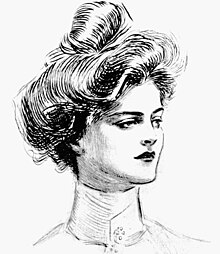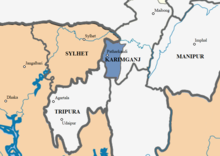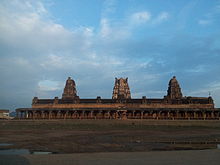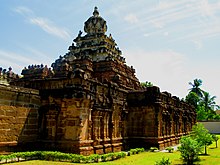Portal:India
Portal maintenance status: (June 2018)
|
Introduction


India, officially the Republic of India, is a country in South Asia. It is the most populous country in the world and the seventh-largest by area. Bounded by the Indian Ocean on the south, the Arabian Sea on the southwest, and the Bay of Bengal on the southeast, it shares land borders with Pakistan to the west; China, Nepal, and Bhutan to the north; and Bangladesh and Myanmar to the east. In the Indian Ocean, India is in the vicinity of Sri Lanka and the Maldives; its Andaman and Nicobar Islands share a maritime border with Thailand, Myanmar, and Indonesia. (Full article...)
 Featured article – show another
Featured article – show another
-
Image 1Portrait by Charles Dana Gibson, c. 1903
Margaret Ives Abbott (June 15, 1878 – June 10, 1955) was an American amateur golfer. She was the first American woman to win an Olympic event: the women's golf tournament at the 1900 Summer Olympics.
Born in Calcutta (now Kolkata), British Raj, in 1878, Abbott moved with her family to Chicago in 1884. She joined the Chicago Golf Club in Wheaton, Illinois, where she received coaching from Charles B. Macdonald and H. J. Whigham. In 1899, she traveled with her mother to Paris to study art. The following year, along with her mother, she signed up for a women's golf tournament without realizing that it was the second modern Olympics. Abbott won the tournament with a score of 47 strokes; her mother tied for seventh place. Abbott received a porcelain bowl as a prize. (Full article...) -
Image 2

The red panda (Ailurus fulgens), also known as the lesser panda, is a small mammal native to the eastern Himalayas and southwestern China. It has dense reddish-brown fur with a black belly and legs, white-lined ears, a mostly white muzzle and a ringed tail. Its head-to-body length is 51–63.5 cm (20.1–25.0 in) with a 28–48.5 cm (11.0–19.1 in) tail, and it weighs between 3.2 and 15 kg (7.1 and 33.1 lb). It is well adapted to climbing due to its flexible joints and curved semi-retractile claws.
The red panda was formally described in 1825. The two currently recognised subspecies, the Himalayan and the Chinese red panda, genetically diverged about 250,000 years ago. The red panda's place on the evolutionary tree has been debated, but modern genetic evidence places it in close affinity with raccoons, weasels, and skunks. It is not closely related to the giant panda, which is a bear, though both possess elongated wrist bones or "false thumbs" used for grasping bamboo. The evolutionary lineage of the red panda (Ailuridae) stretches back around 25 to 18 million years ago, as indicated by extinct fossil relatives found in Eurasia and North America. (Full article...) -
Image 3
Muhammad Ali Jinnah (born Mahomedali Jinnahbhai; 25 December 1876 – 11 September 1948) was a barrister, politician, and the founder of Pakistan. Jinnah served as the leader of the All-India Muslim League from 1913 until the inception of Pakistan on 14 August 1947 and then as Pakistan's first governor-general until his death.
Born at Wazir Mansion in Karachi, Jinnah was trained as a barrister at Lincoln's Inn in London, England. Upon his return to India, he enrolled at the Bombay High Court, and took an interest in national politics, which eventually replaced his legal practice. Jinnah rose to prominence in the Indian National Congress in the first two decades of the 20th century. In these early years of his political career, Jinnah advocated Hindu–Muslim unity, helping to shape the 1916 Lucknow Pact between the Congress and the All-India Muslim League, in which Jinnah had also become prominent. Jinnah became a key leader in the All-India Home Rule League, and proposed a fourteen-point constitutional reform plan to safeguard the political rights of Muslims in the Indian subcontinent. In 1920, however, Jinnah resigned from the Congress when it agreed to follow a campaign of satyagraha, which he regarded as political anarchy. (Full article...) -
Image 4Lage Raho Munna Bhai (pronounced [ləˈɡeː rəˈɦoː mʊnːaːˈbʱaːi] ⓘ; translation: Keep Going, Munna Bro) is a 2006 Indian Hindi-language satirical comedy drama film written, edited and directed by Rajkumar Hirani, who also co-wrote the screenplay with Abhijat Joshi, and produced by Vidhu Vinod Chopra under the banner Vinod Chopra Films. A sequel to Munna Bhai M.B.B.S. (2003), the film is the second installment of the Munna Bhai series. Sanjay Dutt and Arshad Warsi reprised their roles as the titular Munna Bhai and Circuit, respectively. New additions to the cast include Vidya Balan, Dilip Prabhavalkar and Dia Mirza, while several actors from the original, notably Jimmy Sheirgill and Boman Irani, appear in new roles.
In this film, the eponymous lead character, a don in the Mumbai underworld, begins to see visions of Mahatma Gandhi. Through his interactions with Gandhi, he begins to practice what he refers to as "Gandhigiri" (a neologism for "Gandhism") to help ordinary people solve their problems. (Full article...) -
Image 5
Sonam Kapoor Ahuja (pronounced [soːnəm kəˈpuːr]; born 9 June 1985) is an Indian actress who works in Hindi films. She has received several awards, including a National Film Award and a Filmfare Award. One of the highest-paid Hindi film actresses in the 2010s, Kapoor appeared in Forbes India's Celebrity 100 list from 2012 to 2016.
Kapoor, the daughter of actor Anil Kapoor, began her career as an assistant director on filmmaker Sanjay Leela Bhansali's 2005 film Black. She made her acting debut in Bhansali's romantic drama Saawariya (2007), a box office flop, and had her first commercial success with the romantic comedy I Hate Luv Storys (2010). This was followed by a series of commercial failures and repetitive roles, which garnered her negative reviews. The 2013 box office hit Raanjhanaa marked a turning point in Kapoor's career, garnering her praise and Best Actress nominations at several award ceremonies. (Full article...) -
Image 6

India, officially the Republic of India, is a country in South Asia. It is the most populous country in the world and the seventh-largest by area. Bounded by the Indian Ocean on the south, the Arabian Sea on the southwest, and the Bay of Bengal on the southeast, it shares land borders with Pakistan to the west; China, Nepal, and Bhutan to the north; and Bangladesh and Myanmar to the east. In the Indian Ocean, India is in the vicinity of Sri Lanka and the Maldives; its Andaman and Nicobar Islands share a maritime border with Thailand, Myanmar, and Indonesia.
Modern humans arrived on the Indian subcontinent from Africa no later than 55,000 years ago. Their long occupation, initially in varying forms of isolation as hunter-gatherers, has made the region highly diverse, second only to Africa in human genetic diversity. Settled life emerged on the subcontinent in the western margins of the Indus river basin 9,000 years ago, evolving gradually into the Indus Valley Civilisation of the third millennium BCE. By at least 1200 BCE, an archaic form of Sanskrit, an Indo-European language, had diffused into India from the northwest. Its evidence today is found in the hymns of the Rigveda. Preserved by an oral tradition that was resolutely vigilant, the Rigveda records the dawning of Hinduism in India. The Dravidian languages of India were supplanted in the northern and western regions. By 400 BCE, stratification and exclusion by caste had emerged within Hinduism, and Buddhism and Jainism had arisen, proclaiming social orders unlinked to heredity. Early political consolidations gave rise to the loose-knit Maurya and Gupta Empires based in the Ganges Basin. Their collective era was suffused with wide-ranging creativity, but also marked by the declining status of women, and the incorporation of untouchability into an organised system of belief. In South India, the Middle kingdoms exported Dravidian-languages scripts and religious cultures to the kingdoms of Southeast Asia. (Full article...) -
Image 7
Kalidas (pronounced [kaːɭidaːs] transl. The Servant of Kali) is a 1931 Indian biographical film directed by H. M. Reddy and produced by Ardeshir Irani. It is notable for being the first sound film in the Tamil and Telugu languages, and the first sound film to be made in a Dravidian language. It was based on the life of the Sanskrit poet Kalidasa, hence its namesake; it featured P. G. Venkatesan in the title role and T. P. Rajalakshmi as the female lead, with L. V. Prasad, Thevaram Rajambal, T. Susheela Devi, J. Sushila, and M. S. Santhanalakshmi in supporting roles.
Kalidas, principally in Tamil, contained additional dialogue in Telugu and Hindi. While Rajalakshmi spoke Tamil, Venkatesan spoke only Telugu due to his lack of fluency in Tamil, and Prasad spoke only Hindi. Despite its mythological theme, the film featured songs from much later time periods, such as the compositions of Carnatic musician Tyagaraja, publicity songs of the Indian National Congress, and songs about Mahatma Gandhi and the Indian independence movement. The sound was recorded using German-made technology. Kalidas was shot in Bombay on the sets of India's first sound film Alam Ara (1931) and was completed in eight days. (Full article...) -
Image 8

Profile of a Hoysala temple at Somanathapura
Hoysala architecture is the building style in Hindu temple architecture developed under the rule of the Hoysala Empire between the 11th and 14th centuries, in the region known today as Karnataka, a state of India. Hoysala influence was at its peak in the 13th century, when it dominated the Southern Deccan Plateau region. Large and small temples built during this era remain as examples of the Hoysala architectural style, including the Chennakesava Temple at Belur, the Hoysaleswara Temple at Halebidu, and the Kesava Temple at Somanathapura. These three temples were accorded UNESCO world heritage site status in 2023. Other examples of Hoysala craftsmanship are the temples at Belavadi, Amruthapura, Hosaholalu, Mosale, Arasikere, Basaralu, Kikkeri and Nuggehalli. Study of the Hoysala architectural style has revealed a negligible Indo-Aryan influence while the impact of Southern Indian style is more distinct.
Temples built prior to Hoysala independence in the mid-12th century reflect significant Western Chalukya influences, while later temples retain some features salient to Western Chalukya architecture but have additional inventive decoration and ornamentation, features unique to Hoysala artisans. Some three hundred temples are known to survive in present-day Karnataka state and many more are mentioned in inscriptions, though only about seventy have been documented. The greatest concentration of these are in the Malnad (hill) districts, the native home of the Hoysala kings. (Full article...) -
Image 9Eega (transl. The Fly) is a 2012 Indian Telugu-language fantasy action film written and directed by S. S. Rajamouli. The film was produced by Sai Korrapati's Vaaraahi Chalana Chitram with an estimated budget of ₹30–40 crore (US$6–7 million). It was filmed simultaneously in Tamil with the title Naan Ee (transl. I, the Fly). The film stars Nani, Samantha, and Sudeepa. M. M. Keeravani composed the songs and the background score, while K. K. Senthil Kumar was the director of photography. Janardhana Maharshi and Crazy Mohan wrote the dialogue for the Telugu and Tamil versions, respectively.
The film's narrative is in the form of a bedtime story told by a father to his daughter. Its protagonist, Nani, who is in love with his neighbour Bindu, is murdered by a wealthy industrialist named Sudeep, who is attracted to Bindu and considers Nani a rival. Nani reincarnates as a housefly and tries to avenge his death and protect Bindu from an obsessive Sudeep. (Full article...) -
Image 10Mughal-e-Azam (transl. The Great Mughal) is a 1960 Indian epic historical drama film produced and directed by K. Asif. Starring Prithviraj Kapoor, Dilip Kumar, Madhubala, and Durga Khote, it follows the love affair between Mughal Prince Salim (who went on to become Emperor Jahangir) and Anarkali, a court dancer. Salim's father, Emperor Akbar, disapproves of the relationship, which leads to a war between father and son.
The development of Mughal-e-Azam began in 1944, when Asif read a 1922 play called Anarkali, by the playwright Imtiaz Ali Taj, which is set in the reign of Emperor Akbar (1556–1605). Production was plagued by delays and financial uncertainty. Before its principal photography began in the early 1950s, the project had lost a financier and undergone a complete change of cast. Mughal-e-Azam cost more to produce than any previous Indian motion picture; the budget for a single song sequence exceeded that typical for an entire film of the period. The soundtrack, inspired by Indian classical and folk music, comprises 12 songs voiced by playback singer Lata Mangeshkar along with Mohammed Rafi, Shamshad Begum, and classical singer Bade Ghulam Ali Khan, and is often cited among the finest in the history of Hindi cinema. (Full article...) -
Image 11Mother India is a 1957 Indian epic drama film, directed by Mehboob Khan and starring Nargis, Sunil Dutt, Rajendra Kumar and Raaj Kumar. A remake of Khan's earlier film Aurat (1940), it is the story of a poverty-stricken village woman named Radha (Nargis), who in the absence of her husband, struggles to raise her sons and survive against a cunning money-lender amidst many troubles.
The title of the film was भारतीय chosen to counter American author Katherine Mayo's 1927 polemical book Mother India, which vilified Indian culture. Mother India metaphorically represents India as a nation in the aftermath of its independence in 1947, and alludes to a strong sense of Indian nationalism and nation-building. Allusions to Hindu mythology are abundant in the film, and its lead character has been seen as a metonymic representation of an Indian woman who reflects high moral values and the concept of what it means to be a mother to society through self-sacrifice. While some authors treat Radha as the symbol of women's empowerment, others see her cast in female stereotypes. The film was shot in Mumbai's Mehboob Studios and in the villages of Maharashtra, Gujarat, and Uttar Pradesh. The music by Naushad introduced global music, including Western classical music and orchestra, to Hindi cinema. (Full article...) -
Image 12
Prince Sadruddin Aga Khan (17 January 1933 – 12 May 2003) was a French-born statesman and activist who served as United Nations High Commissioner for Refugees from 1966 to 1977, during which he reoriented the agency's focus beyond Europe and prepared it for an explosion of complex refugee issues. He was also a proponent of greater collaboration between non-governmental organizations (NGOs) and UN agencies. The Prince's interest in ecological issues led him to establish the Bellerive Foundation in the late 1970s, and he was a knowledgeable and respected collector of Islamic art.
Born in Paris, France, he was the son of Sir Sultan Mahomed Shah Aga Khan and Princess Andrée Aga Khan. He married twice, but had no children of his own. Prince Sadruddin died of cancer at the age of 70, and was buried in Switzerland. (Full article...) -
Image 13
Freida Selena Pinto (born 18 October 1984) is an Indian actress who has appeared mainly in American and British films. Born and raised in Mumbai, Maharashtra, she resolved at a young age to become an actress. As a student at St. Xavier's College, Mumbai she took part in amateur plays. After graduation, she briefly worked as a model and then as a television presenter.
Pinto rose to prominence with her film debut in the drama Slumdog Millionaire (2008), winning a SAG Award and earning a nomination for the BAFTA Award for Best Supporting Actress. She earned critical acclaim for her roles in Miral (2010), Trishna (2011), and Desert Dancer (2014). She also saw commercial success with the science fiction film Rise of the Planet of the Apes (2011), and the epic fantasy action film Immortals (2011). Pinto's other notable roles include You Will Meet a Tall Dark Stranger (2010), Love Sonia (2018), Hillbilly Elegy (2020), and Mr. Malcolm's List (2022). She also starred in the Showtime miniseries Guerrilla (2017), and had a recurring role in the Hulu series The Path (2018). (Full article...) -
Image 14Sholay (Hindustani: [ˈʃoːleː] ⓘ, transl. 'Embers') is a 1975 Indian Hindi-language action-adventure film directed by Ramesh Sippy, produced by his father G. P. Sippy, and written by Salim–Javed. The film is about two criminals, Veeru (Dharmendra) and Jai (Amitabh Bachchan), hired by a retired police officer (Sanjeev Kumar) to capture the ruthless dacoit Gabbar Singh (Amjad Khan). Hema Malini and Jaya Bhaduri also star, as Veeru and Jai's love interests, Basanti and Radha, respectively. The music was composed by R D Burman.
The film was shot in the rocky terrain of Ramanagara, in the southern state of Karnataka, over a span of two and a half years. Shot was started in October 1973. After the Central Board of Film Certification mandated the removal of several violent scenes, Sholay was released as a 198-minute long film. In 1990, the original director's cut of 204 minutes became available on home media. When first released, Sholay received negative critical reviews and a tepid commercial response, but favourable word-of-mouth publicity helped it to become a box office success. It broke records for continuous showings in many theatres across India, and ran for more than five years at Mumbai's Minerva theatre. The film was also an overseas success in the Soviet Union. It was the highest-grossing Indian film ever at the time, and was the highest-grossing film in India up until Hum Aapke Hain Koun..! (1994). By numerous accounts, Sholay remains one of the highest-grossing Indian films of all time, adjusted for inflation. (Full article...) -
Image 15Margarita with a Straw is a 2014 Indian Hindi-language drama film directed by Shonali Bose. It stars Kalki Koechlin as an Indian teenager with cerebral palsy who relocates to America for her undergraduate education and comes of age following her complex relationship with a blind girl, played by Sayani Gupta. Revathi, Kuljeet Singh, and William Moseley play supporting roles. Produced by Bose in partnership with Viacom18 Motion Pictures, Margarita with a Straw was co-written by Bose and Nilesh Maniyar. The film deals with the challenging concepts of sexuality, inclusion, self-love, and self-acceptance.
Bose conceived the idea for the film in January 2011 during a conversation with Malini Chib, her cousin and a disability rights activist, about the latter's desire to have a normal sex life. Inspired by Chib's story, Bose wrote the first draft of the film's script. After winning a Sundance Mahindra Global Filmmaker Award for the draft, she modified the script to reflect her own perspective, incorporating several personal experiences into the narrative. Bose completed the screenplay with co-writer Maniyar and the advisory council of the Sundance Institute. (Full article...) -
Image 16Sir Robert Eric Mortimer Wheeler CH CIE MC TD FRS FBA FSA (10 September 1890 – 22 July 1976) was a British archaeologist and officer in the British Army. Over the course of his career, he served as Director of both the National Museum of Wales and London Museum, Director-General of the Archaeological Survey of India, and the founder and Honorary Director of the Institute of Archaeology in London, in addition to writing twenty-four books on archaeological subjects.
Born in Glasgow to a middle-class family, Wheeler was raised largely in Yorkshire before moving to London in his teenage years. After studying classics at University College London (UCL), he began working professionally in archaeology, specialising in the Romano-British period. During World War I he volunteered for service in the Royal Artillery, being stationed on the Western Front, where he rose to the rank of major and was awarded the Military Cross. Returning to Britain, he obtained his doctorate from UCL before taking on a position at the National Museum of Wales, first as Keeper of Archaeology and then as Director, during which time he oversaw excavation at the Roman forts of Segontium, Y Gaer, and Isca Augusta with the aid of his first wife, Tessa Wheeler. Influenced by the archaeologist Augustus Pitt Rivers, Wheeler argued that excavation and the recording of stratigraphic context required an increasingly scientific and methodical approach, developing the "Wheeler method". In 1926, he was appointed Keeper of the London Museum; there, he oversaw a reorganisation of the collection, successfully lobbied for increased funding, and began lecturing at UCL. (Full article...) -
Image 17Ganges river dolphin breaking the surface
South Asian river dolphins are toothed whales in the genus Platanista, which inhabit the waterways of the Indian subcontinent. They were historically considered to be one species (P. gangetica) with the Ganges river dolphin and the Indus river dolphin being subspecies (P. g. gangetica and P. g. minor respectively). Genetic and morphological evidence led to their being described as separate species in 2021. The Ganges and Indus river dolphins are estimated to have diverged 550,000 years ago. They are the only living members of the family Platanistidae and the superfamily Platanistoidea. Fossils of ancient relatives date to the late Oligocene.
South Asian river dolphins are small but stocky cetaceans with long snouts or rostra, broad flippers, and small dorsal fins. They have several unusual features. Living in murky river waters, they have eyes that are tiny and lensless; the dolphins rely instead on echolocation for navigation. The skull has large crests over the melon, which help direct their echolocation signals. These dolphins prey mainly on fish and shrimp and hunt them throughout the water column. They are active through the day and are sighted in small groups. Both species are listed as endangered by the IUCN Red List of mammals. Major threats include dams, barrages, fishing nets, and both chemical and acoustic pollution. (Full article...) -
Image 18Pather Panchali (pronounced [pɔtʰer pãtʃali] transl. Song of the Little Road) is a 1955 Indian Bengali-language drama film written and directed by Satyajit Ray in his directoral debut and produced by the Government of West Bengal. It is an adaptation of Bibhutibhushan Bandyopadhyay's 1929 Bengali novel of the same name and features Subir Banerjee, Kanu Banerjee, Karuna Banerjee, Uma Dasgupta, and Chunibala Devi in major roles. The first film in The Apu Trilogy, Pather Panchali depicts the childhood travails of the protagonist Apu and his elder sister Durga amid the harsh village life of their poor family.
The film was shot mainly on location, had a limited budget, featured mostly amateur actors, and was made by an inexperienced crew. Lack of funds led to frequent interruptions in production, which took nearly three years, but the West Bengal government pulled Ray out of debt by buying the film for the equivalent of $60,000, which it turned into a profit of $700,000 by 1980. The sitar player Ravi Shankar composed the film's soundtrack and score using classical Indian ragas. Subrata Mitra was in charge of the cinematography while editing was handled by Dulal Dutta. Following its premiere on 3 May 1955 during an exhibition at New York's Museum of Modern Art, Pather Panchali was released in Calcutta the same year to an enthusiastic reception. A special screening was attended by the Chief Minister of West Bengal and the Prime Minister of India. (Full article...) -
Image 19
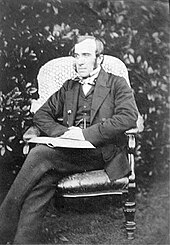
Monier Williams, elected as the second Boden Professor of Sanskrit in 1860; this photograph was taken by Lewis Carroll.
The election in 1860 for the position of Boden Professor of Sanskrit at the University of Oxford was a competition between two candidates offering different approaches to Sanskrit scholarship. One was Monier Williams, an Oxford-educated Englishman who had spent 14 years teaching Sanskrit to those preparing to work in British India for the East India Company. The other, Max Müller, was a German-born lecturer at Oxford specialising in comparative philology, the science of language. He had spent many years working on an edition of the Rig Veda (an ancient collection of Vedic Sanskrit hymns) and had gained an international reputation for his scholarship. Williams, in contrast, worked on later material and had little time for the "continental" school of Sanskrit scholarship that Müller exemplified. Williams regarded the study of Sanskrit as a means to an end, namely the conversion of India to Christianity. In Müller's opinion, his own work, while it would assist missionaries, was also valuable as an end in itself.
The election came at a time of public debate about Britain's role in India in the wake of the Indian Rebellion of 1857. Opinions were divided on whether greater efforts should be made to convert India or whether to remain sensitive to local culture and traditions. Both men battled for the votes of the electorate (the Convocation of the university, consisting of over 3,700 graduates) through manifestos and newspaper correspondence. Williams laid great stress in his campaign on the intention of the original founder of the chair, that the holder should assist in converting India through dissemination of the Christian scriptures. Müller's view was that his work on the Rig Veda was of great value for missionary work, and published testimonials accordingly. He also wanted to teach wider subjects such as Indian history and literature to assist missionaries, scholars, and civil servants – a proposal that Williams criticised as not in accordance with the original benefactor's wishes. The rival campaigns took out newspaper advertisements and circulated manifestos, and different newspapers backed each man. Although generally regarded as superior to Williams in scholarship, Müller had the double disadvantage (in the eyes of some) of being German and having liberal Christian views. Some of the newspaper pronouncements in favour of Williams were based on a claimed national interest of having an Englishman as Boden professor to assist with the work of governing and converting India. (Full article...) -
Image 20
Kangna Amardeep Ranaut (pronounced [kəŋɡənaː raːɳoːʈʰ]; born 23 March 1986) is an Indian actress, filmmaker, and politician serving as a Member of Parliament, Lok Sabha from Mandi since June 2024. Known for her portrayals of strong-willed, unconventional women in female-led Hindi films, she is the recipient of several awards, including four National Film Awards and four Filmfare Awards, and has featured six times in Forbes India's Celebrity 100 list. In 2020, the Government of India honoured her with the Padma Shri, the country's fourth-highest civilian award.
At the age of sixteen, Ranaut briefly took up modelling before being trained under theatre director Arvind Gaur. She made her film debut in the 2006 thriller Gangster, for which she was awarded the Filmfare Award for Best Female Debut, and received praise for portraying emotionally intense characters in the dramas Woh Lamhe... (2006), Life in a... Metro (2007) and Fashion (2008). For the last of these, she won the National Film Award for Best Supporting Actress. She appeared in the commercially successful films Raaz: The Mystery Continues (2009) and Once Upon a Time in Mumbaai (2010) but was criticised for being typecast in neurotic roles. A comic role in Tanu Weds Manu (2011) was well-received, though this was followed by a series of brief, glamorous roles in films that failed to propel her career forward. (Full article...) -
Image 21Osbert Guy Stanhope Crawford CBE FBA FSA (28 October 1886 – 28 November 1957) was a British archaeologist who specialised in the archaeology of prehistoric Britain and Sudan. A keen proponent of aerial archaeology, he spent most of his career as the archaeological officer of the Ordnance Survey (OS) and also wrote a range of books on archaeological subjects.
Born in Bombay, British India, to a wealthy middle-class Scottish family, Crawford moved to England as an infant and was raised by his aunts in London and Hampshire. He studied geography at Keble College, Oxford, and worked briefly in that field before devoting himself professionally to archaeology. Employed by the philanthropist Henry Wellcome, Crawford oversaw the excavation of Abu Geili in Sudan before returning to England shortly before the First World War. During the conflict he served in both the London Scottish Regiment and the Royal Flying Corps, where he was involved in ground and aerial reconnaissance along the Western Front. After an injury forced a period of convalescence in England, he returned to the Western Front, where he was captured by the German Army in 1918 and held as a prisoner of war until the end of the conflict. (Full article...) -
Image 22
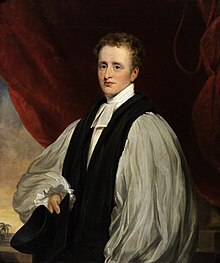
Reginald Heber (21 April 1783 – 3 April 1826) was an English Anglican bishop, a man of letters, and hymn-writer. After 16 years as a country parson, he served as Bishop of Calcutta until his death at the age of 42. The son of a rich landowner and cleric, Heber gained fame at the University of Oxford as a poet. After graduation he made an extended tour of Scandinavia, Russia and Central Europe. Ordained in 1807, he took over his father's old parish, Hodnet, Shropshire. He also wrote hymns and general literature, including a study of the works of the 17th-century cleric Jeremy Taylor.
He was consecrated Bishop of Calcutta in October 1823. He travelled widely and worked to improve the spiritual and general living conditions of his flock. Arduous duties, a hostile climate and poor health led to his collapse and death after less than three years in India. Memorials were erected there and in St Paul's Cathedral, London. A collection of his hymns appeared soon after his death. "Holy, Holy, Holy! Lord God Almighty" remains popular for Trinity Sunday, while "Brightest and Best" is frequently sung during Epiphany. (Full article...) -
Image 23
Kaikhosru Shapurji Sorabji (born Leon Dudley Sorabji; 14 August 1892 – 15 October 1988) was an English composer, music critic, pianist and writer whose music, written over a period of seventy years, ranges from sets of miniatures to works lasting several hours. One of the most prolific 20th-century composers, he is best known for his piano pieces, notably nocturnes such as Gulistān and Villa Tasca, and large-scale, technically intricate compositions, which include seven symphonies for piano solo, four toccatas, Sequentia cyclica and 100 Transcendental Studies. He felt alienated from English society by reason of his homosexuality and mixed ancestry, and had a lifelong tendency to seclusion.
Sorabji was educated privately. His mother was English and his father a Parsi businessman and industrialist from India, who set up a trust fund that freed his family from the need to work. Although Sorabji was a reluctant performer and not a virtuoso, he played some of his music publicly between 1920 and 1936. In the late 1930s, his attitude shifted and he imposed restrictions on performance of his works, which he lifted in 1976. His compositions received little exposure in those years and he remained in public view mainly through his writings, which include the books Around Music and Mi contra fa: The Immoralisings of a Machiavellian Musician. During this time, he also left London and eventually settled in the village of Corfe Castle, Dorset. Information on Sorabji's life, especially his later years, is scarce, with most of it coming from the letters he exchanged with his friends. (Full article...) -
Image 24The 44th Chess Olympiad was an international team chess event organised by the International Chess Federation (FIDE) in Chennai, India, from 28 July to 10 August 2022. It consisted of Open and Women's tournaments, as well as several events to promote chess. The Olympiad was initially supposed to take place in Khanty-Mansiysk, Russia, the host of the Chess World Cup 2019, in August 2020, but it was later moved to Moscow. However, it was postponed due to the COVID-19 pandemic and then relocated to Chennai following Russia's invasion of Ukraine. This was the first Chess Olympiad to take place in India.
The total number of participants was 1,737: 937 in the Open and 800 in the Women's event. The number of registered teams was 188 from 186 nations in the Open section and 162 from 160 nations in the Women's section; being the host nation, India had three teams participating in each section. Both sections set team participation records. The main venue of the Chess Olympiad was the convention centre at the Four Points by Sheraton, while the opening and closing ceremonies were held at the Jawaharlal Nehru Stadium. The Chief Arbiter of the event was France's Laurent Freyd. (Full article...) -
Image 25Portrait by Alexander Bassano, 1882
Victoria (Alexandrina Victoria; 24 May 1819 – 22 January 1901) was Queen of the United Kingdom of Great Britain and Ireland from 20 June 1837 until her death in 1901. Her reign of 63 years and 216 days—which was longer than those of any of her predecessors—constituted the Victorian era. It was a period of industrial, political, scientific, and military change within the United Kingdom, and was marked by a great expansion of the British Empire. In 1876, the British parliament voted to grant her the additional title of Empress of India.
Victoria was the daughter of Prince Edward, Duke of Kent and Strathearn (the fourth son of King George III), and Princess Victoria of Saxe-Coburg-Saalfeld. After the deaths of her father and grandfather in 1820, she was raised under close supervision by her mother and her comptroller, John Conroy. She inherited the throne aged 18 after her father's three elder brothers died without surviving legitimate issue. Victoria, a constitutional monarch, attempted privately to influence government policy and ministerial appointments; publicly, she became a national icon who was identified with strict standards of personal morality. (Full article...)
Selected pictures
-
Image 1Photograph: Yann; edit: Jim CarterA view of the Taj Mahal from the south, featuring the Charbagh garden. The mausoleum complex also includes subsidiary tombs, waterworks infrastructure, the small town of Taj Ganji, and a "moonlight garden". Its origins and architecture have been extensively documented, covering both the circumstances of its commission and the cultural and historical influence of the Islamic Mughal Empire in India.
-
Image 2Photograph credit: Muhammad Mahdi KarimThe Dharmaraya Swamy Temple is one of the oldest temples in Bangalore, India. It is thought to be more than 800 years old and is built in the Dravidian style, with a gopuram, an ornate monumental entrance tower. Gods worshipped here include Dharmaraya, Krishna, Arjuna, Draupadi and Bhima.
The Karaga festival starts from the temple each year; the festival is dedicated to Draupadi, the most important female character in the Hindu epic, the Mahabharata. Starting at midnight, a priest dressed as a woman carries an earthen pot filled with water and adorned with decorations several feet high on his head in procession through the town, preceded by hundreds of bare-chested, dhoti-clad, turbaned Veerakumaras bearing unsheathed swords. -
Image 3Photo: JoydeepCatopsilia pyranthe is a medium sized butterfly of the family Pieridae. It is found in South Asia, Southeast Asia and parts of Australia. This male was photographed in West Bengal, India.
-
Image 4Papilio demoleus matingPhotograph: JkadavoorA mating pair of Papilio demoleus, a common and widespread Swallowtail butterfly, photographed at Kadavoor, Kerala, India. After successful mating the female goes from plant to plant, laying a single egg at a time on top of a leaf, and flies off as soon as the egg is laid.
-
Image 5Photograph: JkadavoorCupha erymanthis is a species of brush-footed butterfly found in forested areas of tropical South and Southeast Asia which may feed on liquids from carrion. This specimen was photographed in Kadavoor, Kerala, India.
-
Image 6Photograph: JJ HarrisonThe Siberian rubythroat (Luscinia calliope) is a small passerine bird generally considered to be an Old World flycatcher of the family Muscicapidae. This migratory insectivorous species breeds in mixed coniferous forest with undergrowth in Siberia, where it nests near the ground. It winters in Thailand, India and Indonesia. It is an extremely rare vagrant to Western Europe and the Aleutian Islands.
-
Image 7Image credit: Vaikunda RajaThe Lotus-Namam is the symbol of Ayyavazhi, a Dharmic belief system that originated in South India in the 19th century. The lotus represents the 1,008-petalled Sahasrara and the flame-shaped white Namam represents the Aanma Jyothi or ātman, sometimes translated as 'soul' or 'self'. The number of practitioners is estimated to be between 700,000 and 8,000,000, although the exact number is unknown, since Ayyavazhis are reported as Hindus during censuses.
-
Image 8Photograph: Jorge RoyanAn Indian merchant holding green chickpeas (Cicer arietinum). One of the earliest cultivated legumes, chickpeas are ingredients in a number of dishes around the world. India is the largest producer of this nutrient-dense food, accounting for 64% of global production in 2016.
-
Image 9Photograph: Muhammad Mahdi KarimA panoramic view of Bangalore from Corporation Circle, with UB City to the left and Richmond area to the right. Kanteerava Indoor Stadium is in the foreground. The third largest city in India, the city is known as the Silicon Valley of India for its numerous IT exports.
-
Image 10Photograph: Muhammad Mahdi KarimMysore Palace, the official residence and seat of the Wodeyars — the rulers of the Kingdom of Mysore. Located in southern India, the kingdom is traditionally believed to have been founded in 1399 as a vassal state to the Vijayanagara Empire before becoming independent in the 16th century.
-
Image 11Photograph credit: Augustus BinuK. T. Thomas (born 30 January 1937) is a former judge of the Supreme Court of India, known for his strong opinions on Indian socio-political matters. He was selected as a district and sessions judge in 1977, and became a judge of the Kerala High Court in 1985. A decade later, he was appointed a judge of the Supreme Court, on which he served until retiring in 2002. He was awarded the Padma Bhushan by the Indian government in 2007 for services in the field of social affairs.
-
Image 12Photograph: Muhammad Mahdi KarimAlstroemeria × hybrida, an Alstroemeria hybrid, at the Lal Bagh Botanical Gardens in Bangalore, India. The genus consists of some 120 species and is native to South America.
-
Image 13Photograph: Augustus BinuArundhati Roy (b. 1961) is an Indian author and political activist who won the 1997 Man Booker Prize with her debut novel The God of Small Things. Born in Shillong, Meghalaya, Roy wrote several screenplays in the late 1980s after meeting (and later marrying) director Pradip Krishen. She wrote The God of Small Things over a four-year period ending in 1996; it was published the following year and received positive international reviews, although in India the work was controversial. She has continued to write essays and articles, but has yet to publish another novel.
-
Image 14Photograph credit: Charles James SharpDanaus genutia, the common tiger or striped tiger, is a species of brush-footed butterfly found in Sri Lanka, India, Myanmar, south-eastern Asia and Australia. It prefers areas of moderate to heavy rainfall, and typical habitats include scrubby jungle, deciduous forests and fallow land near habitations. The insect sequesters toxins from plants, and advertises its unpalatability by having prominent markings and striking colour patterns. This adult male common tiger, of the subspecies D. g. genutia, was photographed in Kerala, India.
-
Image 15Photo: K Hari KrishnanUnripe drupes of black pepper (Piper nigrum) at Trivandrum, Kerala, India. The drupes are cooked briefly in hot water. The heat ruptures cell walls in the pepper, speeding the work of browning enzymes during drying. The drupes are dried for several days, during which the pepper around the seed shrinks and darkens into a thin, wrinkled black layer. Once dried, the spice is called black peppercorn.
 Featured list – show another
Featured list – show another
-
Image 1

Khan in 2017
Indian actor Aamir Khan first appeared on screen at the age of eight in a minor role in his uncle Nasir Hussain's film Yaadon Ki Baaraat (1973). In 1983, he acted in and worked as an assistant director on Paranoia, a short film directed by Aditya Bhattacharya, following which he assisted Hussain on two of his directorial ventures—Manzil Manzil (1984) and Zabardast (1985). As an adult, Khan's first acting project was a brief role in the 1984 experimental social drama Holi.
Khan's first leading role came opposite Juhi Chawla in the highly successful tragic romance Qayamat Se Qayamat Tak (1988). His performance in the film and in the thriller Raakh (1989) earned him a National Film Award – Special Mention. He went on to establish himself with roles in several lucrative films of the 1990s, including the romantic drama Dil (1990), the comedy-drama Hum Hain Rahi Pyar Ke (1993), and the romance Raja Hindustani (1996). He also played against type in the Deepa Mehta-directed Canadian-Indian co-production Earth (1998). In 1999, Khan launched a production company, Aamir Khan Productions, whose first release Lagaan (2001) was nominated for the Academy Award for Best Foreign Language Film, and earned him the National Film Award for Best Popular Film. Also in 2001, he starred alongside Saif Ali Khan and Akshaye Khanna in the acclaimed coming-of-age drama Dil Chahta Hai. Lagaan and Dil Chahta Hai are cited in the media as defining films of Hindi cinema. After a three-year hiatus, Khan portrayed the eponymous lead in Mangal Pandey: The Rising (2005), a period film that underperformed at the box office, after which he played leading roles in two top-grossing films of 2006—Fanaa and Rang De Basanti. (Full article...) -
Image 2

The Padma Bhushan is the third-highest civilian award of the Republic of India. Instituted on 2 January 1954, the award is given for "distinguished service of a high order", without distinction of race, occupation, position, or sex. The recipients receive a Sanad, a certificate signed by the President of India and a circular-shaped medallion with no monetary association. The recipients are announced every year on Republic Day (26 January) and registered in The Gazette of India—a publication used for official government notices and released weekly by the Department of Publication, under the Ministry of Urban Development. The conferral of the award is not considered official without its publication in the Gazette. The name of recipient, whose award have been revoked or restored, both of which require the authority of the President, is archived and they are required to surrender their medal when their name is struck from the register; none of the conferments of Padma Bhushan during 1980–1989 have been revoked or restored. The recommendations are received from all the state and the union territory governments, as well as from Ministries of the Government of India, the Bharat Ratna and the Padma Vibhushan awardees, the Institutes of Excellence, the Ministers, the Chief Ministers and the Governors of State, and the Members of Parliament including private individuals.
When instituted in 1954, the Padma Bhushan was classified as "Dusra Varg" (Class II) under the three-tier Padma Vibhushan awards, which were preceded by the Bharat Ratna in hierarchy. On 15 January 1955, the Padma Vibhushan was reclassified into three different awards as the Padma Vibhushan, the Padma Bhushan and the Padma Shri. The criteria included "distinguished service of a high order in any field including service rendered by Government servants", but excluded those working with the public sector undertakings with the exception of doctors and scientists. The 1954 statutes did not allow posthumous awards; this was subsequently modified in the January 1955 statute. The design was also changed to the form that is currently in use; it portrays a circular-shaped toned bronze medallion 1+3⁄4 inches (44 mm) in diameter and 1⁄8 inch (3.2 mm) thick. The centrally placed pattern made of outer lines of a square of 1+3⁄16 inches (30 mm) side is embossed with a knob carved within each of the outer angles of the pattern. A raised circular space of diameter 1+1⁄16 inches (27 mm) is placed at the centre of the decoration. A centrally located lotus flower is embossed on the obverse side of the medal and the text "Padma" is placed above and the text "Bhushan" is placed below the lotus written in Devanagari script. The State Emblem of India is displayed in the centre of the reverse side, together with the national motto of India, "Satyameva Jayate" (Truth alone triumphs) in Devanagari script, which is inscribed on the lower edge. The rim, the edges and all embossing on either side is of standard gold with the text "Padma Bhushan" of gold gilt. The medal is suspended by a pink riband 1+1⁄4 inches (32 mm) in width with a broad white stripe in the middle. It is ranked fifth in the order of precedence of wearing of medals and decorations of the Indian civilian and military awards. (Full article...) -
Image 3

Yash Chopra, the founder of Yash Raj Films, pictured in 2012. He directed 13 films for the company between 1973 and 2012.
Yash Raj Films (abbreviated as YRF) is an Indian entertainment company, established by filmmaker Yash Chopra in 1970, that produces and distributes motion pictures. As of 2022, the company has produced over 80 Hindi films and one Tamil film. YRF started a film distribution business in 1997; in addition to distributing their own productions, the company has handled the domestic and/or international distribution of over 50 films from other companies. The most frequent collaborations of the company have been with the actors Rani Mukerji, Rishi Kapoor, Shah Rukh Khan, Anushka Sharma, Katrina Kaif, and Saif Ali Khan.
YRF's first release came in 1973 with the Chopra-directed Daag, a drama about bigamy, starring Rajesh Khanna, Raakhee and Sharmila Tagore. The company had four more releases in the 1970s, including the ensemble romantic drama Kabhi Kabhie and the action film Kaala Patthar, both of which starred Amitabh Bachchan and Raakhee. YRF's sole commercial success in the 1980s was the Sridevi-starring romantic musical Chandni. The year 1995 marked the directorial debut of Chopra's elder son Aditya Chopra with the highly successful romantic drama Dilwale Dulhania Le Jayenge. Starring Shahrukh Khan and Kajol, the film has the longest theatrical run in Indian cinema history. Other successful releases of the 1990s were Darr (1993) and Dil To Pagal Hai (1997), both starring Khan. (Full article...) -
Image 4
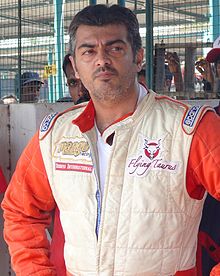
Ajith Kumar in 2010
Ajith Kumar is an Indian actor who works mainly in Tamil cinema. Apart from a small role in the 1990 Tamil film En Veedu En Kanavar, his professional career began three years later with his debut as a lead actor in Tamil cinema with Amaravathi (1993). Despite being a moderate success, the film helped him obtain more modelling assignments. He followed it up the same year with Prema Pusthakam, his only Telugu film to date. After Amaravathi's release, Ajith opted against acting, and instead tried pursuing a career in auto racing. While training for an amateur race, he injured his back and underwent three major surgeries, leaving him bed-ridden for a year and a half. After recovering from the injury, he played supporting roles in Paasamalargal (1994) and Pavithra (1994). After this, he co-starred with Vijay in Rajavin Parvaiyile (1995). That same year, he had his breakthrough with the romantic thriller Aasai. His performance earned him critical acclaim and established him as an up-and-coming actor in Tamil cinema.
He was next seen as the main lead in Agathiyan's epistolary Kadhal Kottai (1996), a critical and commercial success. In 1997, he had five releases, all of which were commercial failures. Ajith's dual portrayal of twin brothers—where one is deaf-mute—in S. J. Suryah's Vaalee (1999) won him his first Filmfare Award for Best Tamil Actor. Impressed with his performance in that film, Rajiv Menon cast Ajith in the ensemble drama Kandukondain Kandukondain (2000) which was also commercial and critical success. The following year, he collaborated with debutant director AR Murugadoss on the action film Dheena. The film was successful in establishing his reputation as an action hero and earning him the nickname "Thala" ("leader"). He earned critical acclaim for his dual role performance in the vigilante film Citizen (2001), and the film was commercial success. and a Best Actor nomination at Filmfare for the drama Poovellam Un Vasam (2001). His last release of the year was Santosh Sivan's Hindi film Aśoka, where he played a brief antagonistic role opposite Shah Rukh Khan. His -role performance as twin brothers in K. S. Ravikumar's film Villain (2002) won him a second Filmfare Award for Best Tamil Actor. (Full article...) -
Image 5

Tabu at an event for De De Pyaar De in 2019
Indian actress Tabu appears primarily in Hindi, Telugu, and Tamil films. Her first credited role came as a teenager in Dev Anand's Hum Naujawan (1985), and her first major role was in the Telugu film Coolie No. 1 (1991). In 1994, Tabu received the Filmfare Award for Best Female Debut for the Hindi action drama Vijaypath, which marked her first of many collaborations with co-star Ajay Devgn. The year 1996 was key for Tabu. Her performance as a young woman affected by the Punjab insurgency in Gulzar's Maachis proved to be a breakthrough, winning her the National Film Award for Best Actress. Also that year, Tabu won the Filmfare Award for Best Actress – Telugu for the romance Ninne Pelladata, and featured alongside Govinda in the comedy film Saajan Chale Sasural.
Tabu had a brief role in the war film Border, the highest-grossing Hindi film of 1997, and portrayed a village girl opposite Anil Kapoor in the Priyadarshan-directed drama Virasat. Among her 1999 releases were two of the top-grossing Bollywood films of the year—the comedy Biwi No.1, and the family drama Hum Saath-Saath Hain. She also starred as the rebellious daughter of a corrupt politician in Gulzar's critically praised drama Hu Tu Tu (1999). The following year, she starred in Kandukondain Kandukondain, a Tamil adaptation of Sense and Sensibility, and played a submissive homemaker in the bilingual drama Astitva. Tabu garnered a second National Film Award for Best Actress for portraying a bar dancer in Madhur Bhandarkar's crime drama Chandni Bar (2001). In 2003, she starred in the Bengali film Abar Aranye, and portrayed a character based on Lady Macbeth, in Maqbool—an adaptation of Macbeth from Vishal Bhardwaj. Following a few commercial failures, Tabu played triple roles in M. F. Husain's musical drama Meenaxi: A Tale of Three Cities. Tabu's first international project came with Mira Nair's adaptation of Jhumpa Lahiri's novel The Namesake. In R. Balki's Cheeni Kum (2007), Tabu starred alongside Amitabh Bachchan as a woman romantically involved with a much older man; the role earned her a record fourth Filmfare Critics Award for Best Actress. (Full article...) -
Image 6
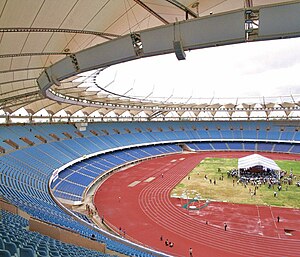
Jawaharlal Nehru Stadium as it appeared in July 2010, was the main venue for the 1982 Asiad.
The 1982 Asian Games (also known as the IX Asiad)[a] was a multi-sport event held in Delhi, India, from 12 November to 4 December 1982. A total of 3,411 athletes from 33 National Olympic Committees (NOCs) participated in these games, competing in 147 events in 21 sports and 22 disciplines. The number of participating countries was the greatest in Asian Games history. Sport events of handball, equestrian, rowing and golf were included for the first time; while fencing and bowling were excluded. This medal table ranks the participating NOCs by the number of gold medals won by their athletes.
Athletes from 23 participating NOCs won at least one medal; athletes from 16 of these NOCs secured at least one gold. Athletes from China won 61 gold medals, the most of any nation at these Asiad, and led the gold-medal count for the first time in their Asiad history. Japan had won the greatest number of medals in previous editions of the Games. China first competed at the Asian Games in 1974, in Tehran, where it finished third. Athletes from both China and Japan won the most total medals with 153. China has secured the top medal spot in every Asiad since 1982. South Korea finished third in total medals. North Korea finished fifth in total medals, and fourth in the gold-medal count. Host nation India finished the games with 57 medals overall (13 gold, 19 silver and 25 bronze, its best performance since 1951), in fifth spot in terms of total gold medals. (Full article...) -
Image 7
The Sudan Block of NDA
The Indian National Defence Academy (NDA) is the joint services academy of the Indian Armed Forces, where cadets of the three armed forces (the Army, the Navy and the Air Force) train together before beginning pre-commission training at their respective service academies (Indian Military Academy (IMA), Indian Naval Academy (INA), and Air Force Academy (AFA) for army, navy, and air force cadets respectively). Established in 1954 and located in vicinity of Khadakwasla Dam, near Pune, it is the world's first tri-service academy.
NDA is not the only officer training academy in India. Besides NDA, which is tri-service academy, the Indian Army's IMA, Officers Training Academy (OTA), Army Cadet College (ACC), the Indian Navy's INA, and the Air Force's AFA are the other officer training academies of India. Besides cadets from NDA, these academies accept cadets separately from several streams. Apart from these, the Indian Army has three establishments for technical stream which include College of Military Engineering (CME), Military College of Telecommunication Engineering (MCTE), and Military College of Electronics and Mechanical Engineering (MCEME). Although cadets are imparted technical training at these three academies, they are commissioned through OTA, Gaya. Excluding all these establishments, which are meant for combat arms, the Indian Army has other commissioning academies for support services such as the Medical Corps, and the Judge Advocate General's Department for example. (Full article...) -
Image 8The prime minister of India is the chief executive of the Government of India and chair of the Union Council of Ministers. Although the president of India is the constitutional, nominal, and ceremonial head of state, in practice and ordinarily, the executive authority is vested in the prime minister and their chosen Council of Ministers. The prime minister is the leader elected by the party with a majority in the lower house of the Indian parliament, the Lok Sabha, which is the main legislative body in the Republic of India. The prime minister and their cabinet are at all times responsible to the Lok Sabha. The prime minister can be a member of the Lok Sabha or of the Rajya Sabha, the upper house of the parliament. The prime minister ranks third in the order of precedence.
The prime minister is appointed by the president of India; however, the prime minister has to enjoy the confidence of the majority of Lok Sabha members, who are directly elected every five years, unless a prime minister resigns. The prime minister is the presiding member of the Council of Ministers of the Union government. The prime minister unilaterally controls the selection and dismissal of members of the council; and allocation of posts to members within the government. This council, which is collectively responsible to the Lok Sabha as per Article 75(3), assists the president regarding the operations under the latter's powers; however, by the virtue of Article 74 of the Constitution, such 'aid and advice' tendered by the council is binding. (Full article...) -
Image 9

Basu at the audio release of Creature 3D
Bipasha Basu is an Indian actress who has featured in over 50 films, predominantly in Hindi language. After a successful career as a model, she made her film debut with a supporting role in Abbas–Mustan's thriller Ajnabee (2001), which won her the Filmfare Award for Best Female Debut. Basu followed this with a role in her first Telugu cinema—the action film Takkari Donga (2002). She had her first major success with the supernatural thriller Raaz (2002), which earned Basu her first Filmfare Award for Best Actress nomination. The following year, she starred opposite John Abraham in the erotic thriller Jism, in which she played a seductive wife. She received a Filmfare Award for Best Performance in a Negative Role nomination for the film. Her roles in these films established her as a sex symbol.
Basu followed this initial success with roles in a series of commercial failures, including the thrillers Aetbaar, Rudraksh, Rakht—all in 2004—and the romance Barsaat (2005). She later featured in Prakash Jha's crime drama Apaharan (2005) and the ensemble comedy No Entry (2005). The latter emerged as a financial success, grossing ₹750 million (US$8.8 million) at the box office, and Basu's role of an escort earned her a nomination for the Best Supporting Actress at the 51st Filmfare Awards. Basu had seven film releases in 2006. Her role as an executive at a conglomerate in Madhur Bhandarkar's drama Corporate earned her another nomination for the Filmfare Award for Best Actress. She then portrayed a character based on Bianca in Vishal Bhardwaj's Omkara, an adaptation of the Shakespearean tragedy Othello. In Sanjay Gadhvi's action film Dhoom 2—her final release of the year—she played dual roles; it was the top-grossing Bollywood film of the year. In 2008, she collaborated with Abbas–Mustan for the second time for Race. Her performance as a troubled wife in Rituparno Ghosh's 2009 Bengali film Shob Charitro Kalponik was critically acclaimed. She then featured in the third installment of the Raaz series, entitled Raaz 3D (2012). Due to her frequent associations with horror films, she was labelled India's "horror queen" by the media. (Full article...) -
Image 10
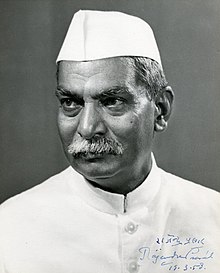
The president of India is the head of state of the Republic of India and the Supreme Commander of the Indian Armed Forces. The president is referred to as the first citizen of India. Although vested with these powers by the Constitution of India, the position is largely a ceremonial one and executive powers are de facto exercised by the prime minister.
The president is elected by the Electoral College composed of elected members of the parliament houses, the Lok Sabha and the Rajya Sabha, and also members of the Saasana Sabha or Vidhan Sabha, the state legislative assemblies. Presidents may remain in office for a tenure of five years, as stated by article 56, part V, of the Constitution of India. In the case where a president's term of office is terminated early or during the absence of the president, the vice president assumes office. By article 70 of part V, the parliament may decide how to discharge the functions of the president where this is not possible, or in any other unexpected contingency. (Full article...) -
Image 11The state president of the Indian National Congress is the state-level highest command of the Indian National Congress (INC), responsible for leading in political campaigns at state level. State presidents shoulder a diverse array of roles and responsibilities integral to the effective functioning of the party at the state-level. Also known as the leader of the state and union territory party, a state president is chosen by the party president.
Being the higher decision-making body, state presidents actively contribute to the formulation of state-level policies, representing the party's stance on relevant issues and engaging in the development and implementation of election strategies during state elections. In addition, a state president is tasked with overseeing the organizational structure of the Pradesh Congress Committee, including the appointment and coordination of leaders at various levels, such as the district committee, block committee, and each panchayat development block or panchayat samiti. Serving as a spokesperson for the party in the state, they communicate the party's positions to the media and keep party members informed about policies and decisions. State presidents also play a pivotal role in building and maintaining the party's membership, reaching out to diverse sections of society and addressing their concerns to advance the party's agenda. (Full article...) -
Image 12

Rajinikanth at the audio release of Enthiran (2010)
Rajinikanth is an Indian actor, film producer, screenwriter and also a playback singer who has appeared predominantly in Tamil cinema. He began his film career by playing antagonistic and supporting roles before graduating to a lead actor. After starring in numerous commercially successful films throughout the 1980s and 1990s, he has continued to hold a matinée idol status in the popular culture of Tamil Nadu. Writing for Slate, Grady Hendrix called him the "biggest movie star you've probably never heard of." Rajinikanth has also worked in other Indian film industries such as Hindi, Telugu, Kannada and Malayalam.
He made his cinematic debut with K. Balachander's 1975 Tamil drama Apoorva Raagangal, in which he played a minor role of an abusive husband. He had his first major role in Balachander's Telugu drama film Anthuleni Katha (1976), and got his breakthrough in Tamil with Moondru Mudichu (1976)—also directed by Balachander. His style and mannerisms in the latter earned recognition from the audience. In 1977, he acted in 15 films, playing negative characters in most of them, including Avargal, 16 Vayathinile, Aadu Puli Attam and Gaayathri. He had positive roles in Kavikkuyil, the Kannada film Sahodarara Savaal, and the Telugu film Chilakamma Cheppindi, in which he played the protagonist for the first time in his career. His role as a failed lover in S. P. Muthuraman's Bhuvana Oru Kelvi Kuri (1977) won him critical acclaim. In 1978, he was cast as the main lead in the Tamil film Bairavi. The same year, he received critical acclaim for his roles in Mullum Malarum and Aval Appadithan; the former earned him a Tamil Nadu State Film Award Special Prize for Best Actor. He made his Malayalam cinema debut with I. V. Sasi's fantasy Allauddinum Albhutha Vilakkum (1979), an adaptation of a story from One Thousand and One Nights. By the end of the decade, he had worked in all South Indian languages and established a career in Tamil cinema. (Full article...) -
Image 13
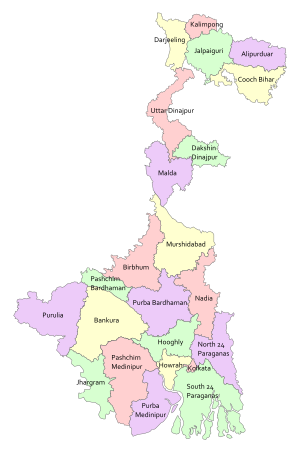
Districts of West Bengal
The Himalayas lies in the north of West Bengal and the Bay of Bengal is at the south. Between them, the river Ganga flows eastwards and its main distributary, the Hooghly River, flows south to reach the Bay of Bengal. The Siliguri Corridor, which connects North-East India with rest of the India, lies in the North Bengal region of the state. Geographically, West Bengal is divided into a variety of regions—Darjeeling Himalayan hill region, Terai and Dooars region, North Bengal plains, Rarh region, Western plateau and high lands, coastal plains, Sundarbans and the Ganga Delta.
In 1947, when India gained independence, the state of West Bengal was formed, with 14 districts, as per partition plan of the then Bengal province of British India. The former princely state Koch Bihar joined as a district on 26 January 1950, and the former French enclave Chandannagore joined as part of the Hooghly district in 1954. The States Reorganisation Act of 1956 led to addition of Purulia district to the state and to enlargement of West Dinajpur district. Later, larger districts such as West Dinajpur, 24 Parganas and Midnapore were bifurcated. (Full article...) -
Image 14
The chief minister of Karnataka is the chief executive officer of the government of the Indian state of Karnataka. As per the Constitution of India, the governor of Karnataka is the state's de jure head, but de facto executive authority rests with the chief minister, a template applicable to all other Indian states. Following elections to the Karnataka Legislative Assembly, the governor usually invites the political party (or a coalition of political parties) with a majority of assembly seats to form the government in the state. The governor appoints the chief minister, whose Council of Ministers is collectively responsible to the assembly. Given that he/she has the confidence of the assembly, the chief minister's term is for five years, renewable, and is subject to no term limits.
Historically, this office replaced that of the dewan of Mysore of the erstwhile Kingdom of Mysore with India's constitution into a republic. Since 1947, there have been a total of twenty-three chief ministers of Mysore (as the state was known before 1 November 1973) and Karnataka. A majority of them belonged to the Indian National Congress (INC) party, including the inaugural officeholder K. C. Reddy. The longest-serving chief minister, D. Devaraj Urs, held the office for over seven years in the 1970s. INC's Veerendra Patil had the largest gap between two terms (over eighteen years). One chief minister, H. D. Deve Gowda, went on to become the eleventh prime minister of India, whereas another, B. D. Jatti, served as the country's fifth vice president. B. S. Yediyurappa who was the first chief minister from the Bharatiya Janata Party (BJP), served as the chief minister of the state for four terms in 2007, 2008, 2018 and 2019, the only one to do so. S. R. Bommai served as the chief minister representing the Janata Parivar, whose son Basavaraj Bommai became chief minister representing the BJP in 2021 becoming the second father-son duo to serve office after HD Deve Gowda and HD Kumaraswamy. There have been six instances of president's rule in Karnataka, most recently from 2007 to 2008. (Full article...) -
Image 15

Haasan in 2014
Shruti Haasan is an Indian actress and singer who works in Telugu, Hindi and Tamil films. She started her career as a playback singer at the age of six in the 1992 Tamil film Thevar Magan. She had a brief role in her father, Kamal Haasan's Tamil-Hindi directorial Hey Ram (2000) as a child artist. Haasan's first major appearance was in the Hindi film Luck (2009), in which she played a dual role of a woman avenging her twin sister's death. She played the female lead in the films Anaganaga O Dheerudu and 7aum Arivu; both were released in 2011 and together earned her the Best Female Debut – South at the 59th Filmfare Awards South ceremony.
Haasan's subsequent releases Oh My Friend (2011) and 3 (2012) were commercially unsuccessful. The latter earned her a nomination for the Best Actress – Tamil at the 60th Filmfare Awards South ceremony. A turning point came in Haasan's career with Harish Shankar's commercially successful Telugu film Gabbar Singh (2012). The release was followed by a series of successful films such as Balupu (2013) and Yevadu (2014). She received her first Filmfare Award for Best Actress – Telugu for her performance in Race Gurram (2014). (Full article...) -
Image 16
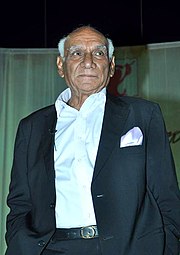
Chopra in 2012
Yash Chopra (1932–2012) was an Indian film director and producer known for his works in Bollywood. Acknowledged as one of the greatest filmmakers from the country, he was credited by the media for "changing the face of romance to become a brand" in the industry. He made his directorial debut with the family drama Dhool Ka Phool, which was produced by his elder brother Baldev Raj. The film, released in 1959, became a commercial success worldwide and gave him critical acclaim. Chopra's next film, Dharmputra (1961), failed to perform well at the box office but won the National Film Award for Best Feature Film in Hindi. In 1965, he directed the drama Waqt about a family who are separated due to a natural disaster. A commercial success, it was one of the earliest Indian films to star an ensemble cast and won a first Best Director trophy for him at the Filmfare Awards.
The 1980s was the most unsuccessful period of his career. Following the failure of his romantic drama Silsila (1981), which he co-wrote, directed and produced, Chopra's popularity began to wane. According to his biographer, the British academic Rachel Dwyer, this was because action and crime films were more popular at the time while most of his films were romances. Chopra experimented with making two action films, Mashaal (1984) and Vijay (1988), which underperformed financially but were well received by critics. Chandni was his only box-office success of the decade. Starring Sridevi in the title role, the film tells the story of a young woman who is accused of being responsible for her lover's accident. Chopra's career began to revive since its premiere in 1989; the film was named the Best Popular Film Providing Wholesome Entertainment at the 37th National Film Awards and considered one of his best films. (Full article...) -
Image 17Velaiilla Pattadhari (transl. Unemployed graduate) is a 2014 Indian Tamil-language comedy drama film written and filmed by Velraj while also making his directorial debut. The film featured Dhanush, who produced the film under his production company Wunderbar Films, and Amala Paul in the lead roles. Saranya Ponvannan, Samuthirakani, Vivek, Surbhi and Amitash Pradhan played supporting roles. The film's story focuses on Raghuvaran (Dhanush), a civil engineering graduate who is unemployed for four years, and his search for a job. As soon as he finds employment, he faces competition from Arun Subramaniam (Amitash), the head of a rival engineering company, for a government project contract. The rest of the film shows how Raghuvaran overcomes the obstacles set by Arun. The soundtrack and score were composed by Anirudh Ravichander while the editing was handled by M. V. Rajesh Kumar.
Produced on a budget of ₹80 million, Velaiilla Pattadhari was released on 18 July 2014 and received positive reviews. It was commercially successful, grossing ₹530 million worldwide. The film won 19 awards from 31 nominations; its direction, performances of the cast members and music have received the most attention from award groups. (Full article...) -
Image 18Satyajit Ray (listen; 2 May 1921 – 23 April 1992) was an Indian filmmaker who worked prominently in Bengali cinema. Ray received numerous awards and honours, including India's highest award in cinema, the Dadasaheb Phalke Award (1984) and India's highest civilian award, the Bharat Ratna (1992). He was also awarded the Commander of the National Order of the Legion of Honour, the highest decoration in France (1987) and an Honorary Award at the 64th Academy Awards (1991).
Often regarded as one of the greatest filmmakers of world cinema, Ray made his directorial debut in 1955 with Pather Panchali. The film earned critical acclaim and was awarded under the Best Film category at various award ceremonies and film festivals, including the 3rd National Film Awards (1955), 7th Berlin International Film Festival (1957), and 1st San Francisco International Film Festival (1957). Pather Panchali was also awarded the "Prix du document humain" prize at the 9th Cannes Film Festival (1956). Ray won thirty-five National Film Awards during his four-decade career. Six of his films—Pather Panchali, Apur Sansar (1959), Charulata (1964), Goopy Gyne Bagha Byne (1968), Seemabaddha (1971), and Agantuk (1991)—won the Best Feature Film. Three films—Jalsaghar (1958), Abhijan (1962), and Pratidwandi (1970)—were awarded with Second Best Feature Film and Mahanagar (1963) was adjudged the Third Best Feature Film. Ray's 1961 documentary on Nobel laureate Rabindranath Tagore received awards at the Locarno and Montevideo film festivals as well as the National Film Award for Best Non-Feature Film. His Hindi film Shatranj Ke Khilari (1977) won the National Film Award for Best Feature Film in Hindi, and the Filmfare Award for Best Director. Ray's Apu Trilogy (1955–59), comprising Pather Panchali, Aparajito (1956) and Apur Sansar (1959), appeared in Time's All-Time 100 Movies in 2005. (Full article...) -
Image 19
Preity Zinta is an Indian actress, who has received several awards for her acting in Hindi films. Her career began in 1998 with Mani Ratnam's acclaimed drama Dil Se.. and the box office hit Soldier. Both films won her the award for Best Female Debut at the 44th Filmfare Awards. Her performance in Dil Se.. also earned her a Best Supporting Actress nomination at the same ceremony, while Soldier won her three more Best Debut awards at other major ceremonies. Zinta received her first Filmfare nomination for Best Actress for her portrayal of a teenage single mother in Kya Kehna. She followed these films with several critically and commercially successful films, such as Mission Kashmir (2000) and Dil Chahta Hai (2001), and her performances in Chori Chori Chupke Chupke (2001), Dil Hai Tumhaara (2002) and Armaan (2003) were praised.
Zinta won several awards for her performance in the romantic comedy-drama Kal Ho Naa Ho, including her first and only Filmfare Award for Best Actress. She went on to star in top-grossing productions in India and abroad, including Koi... Mil Gaya (2003), Veer-Zaara (2004), Salaam Namaste (2005) and Kabhi Alvida Naa Kehna (2006), all of which earned her different nominations at major award ceremonies, which, in addition to Filmfare, include such organisations as Screen, Zee Cine, the International Indian Film Academy (IIFA), and Stardust, among others. After a relatively low phase, she started appearing in arthouse films, known in India as parallel cinema. She played her first international film role in Deepa Mehta's Canadian drama Heaven on Earth (2008, titled Videsh in India). Her portrayal in the film won her the Silver Hugo Award for Best Actress at the Chicago International Film Festival, and she was a Best Actress nominee at several award functions in Canada, including the Genie Awards by the Academy of Canadian Cinema & Television, and the Vancouver Film Critics Circle. (Full article...) -
Image 20
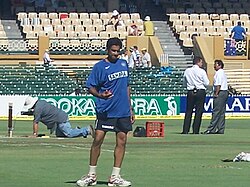
Anil Kumble, India's leading wicket-taker in Tests and ODIs
In cricket, a five-wicket haul (also known as a "five–for" or "fifer") refers to a bowler taking five or more wickets in a single innings. This is regarded as a notable achievement, as of October 2024[update] only 54 bowlers have taken 15 or more five-wicket hauls at an international level in their cricketing careers.
Anil Kumble is a former Test and One Day International (ODI) cricketer who represented India. He is a right-arm leg spin (legbreak googly) bowler. Kumble has taken 619 wickets in Test cricket and 337 wickets in ODI cricket. With 37 five-wicket hauls, Kumble has the highest number of Test and combined international five-wicket hauls among Indian cricketers and fourth highest among all players, after Muttiah Muralitharan, Richard Hadlee, and Shane Warne.
Kumble made his ODI debut against Sri Lanka and his Test debut against England, both in 1990. His first five-wicket haul was against South Africa at Johannesburg (November 1992) in the second Test of India's tour. He has claimed the most of his five-wicket hauls against Australia, ten of them, all in Test matches. His best performance was against Pakistan at the Feroz Shah Kotla in 1999; Kumble took all ten wickets during the second innings, just the second person to do so, after Jim Laker, and in the process ensured India of their first Test victory against Pakistan in twenty years. The feat also ranks as the second-best bowling figure in Test history. Twenty of Kumble's Test cricket five-wicket hauls have come in victory for India, while five have been in defeats. Kumble has also taken two five-wicket hauls in ODIs. His first ODI five-wicket haul was against the West Indies during the final of the 1993 Hero Cup at Eden Gardens, Calcutta when he took six wickets for twelve runs, a record for India in One Day Internationals. The performance ensured India's victory and Kumble was adjudged man of the match. His other ODI five-wicket haul was against New Zealand at the Basin Reserve in 1994. (Full article...) -
Image 21The Dirty Picture is a 2011 Indian biographical drama film directed by Milan Luthria and produced by Shobha and Ekta Kapoor. Inspired by the lives of such actresses as Silk Smitha and Disco Shanti, the film narrates the rise and fall of a dancing girl in Tamil cinema. The Dirty Picture features Vidya Balan in the lead role, and co-stars Emraan Hashmi, Tusshar Kapoor and Naseeruddin Shah. Rajat Arora wrote the screenplay, dialogues and lyrics for the film and Vishal–Shekhar composed the music.
Made on a budget between ₹170 million (US$2.0 million) and ₹180 million (US$2.1 million), The Dirty Picture was released worldwide on 2 December 2011, and earned ₹1.14 billion (US$13 million). The film garnered awards and nominations in several categories, with particular praise for Vidya's performance, the dialogues, and the costume design by Niharika Khan. As of 2012, the film has won 51 awards. (Full article...) -
Image 22
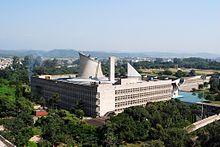
The Punjab Legislative Assembly is the unicameral state legislature of Punjab state in North India. The seat of the Legislative Assembly is at Chandigarh, the capital of the state. It is housed within the Chandigarh Capitol Complex, a World Heritage Site designed by Le Corbusier. The term of the assembly is five years, unless it is dissolved earlier. Since 1977, it has had 117 members who are directly elected, from single-seat constituencies.
Since the independence of India, the Scheduled Castes (SC) and Scheduled Tribes (ST) have been given Reservation status, guaranteeing political representation, and the Constitution lays down the general principles of positive discrimination for SCs and STs. The 2011 census of India stated that there were no people of any Scheduled Tribes in Punjab, while the Scheduled Castes constituted a significant portion of the population of the state, at 31.9%. The Scheduled Castes have been granted a reservation of 34 seats in the assembly. (Full article...) -
Image 23

Asin in 2012
Asin is a former Indian actress who is known for her work in Tamil, Telugu and Hindi language films. She made her acting debut at the age of 15 in the Malayalam-language satirical comedy-drama Narendran Makan Jayakanthan Vaka in 2001. Asin had her first commercial success with the Telugu film Amma Nanna O Tamila Ammayi (2003). For her performance as a Tamil girl in the film, she received the Filmfare Best Telugu Actress Award. In the same year she won the Santosham Best Actress Award for her role in Telugu film Sivamani. In her next two Telugu releases: Lakshmi Narasimha (2004) and Gharshana (2004), Asin played the love interest of a police officer. Lakshmi Narasimha was a commercial success, while Gharshana received mixed reviews from critics but later gained a cult following.
She made her debut in Tamil cinema in the 2004 sports drama M. Kumaran Son of Mahalakshmi, a commercial success. The 2005 action thriller Ghajini marked a turning point in her career. Her role as a vivacious young model named Kalpana won her the Filmfare Best Tamil Actress Award. This led to a series of lead roles in commercially successful films, including the action film Sivakasi (2005), the thriller Varalaru (2006), the action thriller Pokkiri (2007), the action drama Vel (2008) and the science fiction film Dasavathaaram (2008), which established her as a leading actress of Tamil cinema. (Full article...) -
Image 24

The national president of the Bharatiya Janata Party is the chief executive authority of the BJP, and fills a number of roles, including chairing meetings of the National Executive of the party and appointing the presidents of party subsidiaries, such its youth wing and farmer's wing. Any candidate for the presidency needs to have been a member of the party for at least 15 years. The president is nominally elected by an electoral college composed of members drawn from the party's National and State councils, but in practice is a consensus choice of senior members of the party. The term of the president is three years long, and individuals may not serve more than two consecutive terms. The president usually does not also hold a post within a government, and party chiefs have resigned the position to assume posts in Cabinet.
After the party's foundation in 1980, Atal Bihari Vajpayee became its first president. He later became the prime minister of India, the only BJP president to serve in that position to date. In 1986, Lal Krishna Advani was sworn in as the party president and has been the longest serving president over three different periods. As of 2022, 11 people have served as the president of the BJP, including Rajnath Singh and Amit Shah who have also served two terms. J. P. Nadda is the most recent president, having been appointed in January 2020. (Full article...) -
Image 25
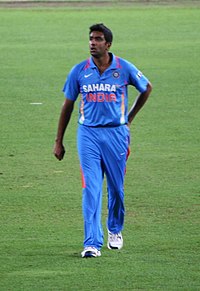
Ashwin has taken a pair of five-wicket hauls in a match on four occasions.
In cricket, a five-wicket haul (also known as a "fifer") refers to a bowler taking five or more wickets in a single innings. This is regarded as a notable achievement, and as of October 2024[update] only 54 bowlers have taken 15 or more five-wicket hauls at international level in their cricketing careers. Ravichandran Ashwin – a right-arm off break bowler – is a Test, One Day International (ODI) and Twenty20 International (T20I) cricketer who represents the India national cricket team. In a 2016 interview, former Sri Lankan cricketer Muttiah Muralitharan described Ashwin as the "best current Test spinner". As of September 2024[update], Ashwin has taken 37 five-wicket hauls in international cricket; he ranks joint-fourth in the all-time list, and joint-first among his countrymen.
Ashwin made his Test debut in November 2011 against the West Indies. He took nine wickets in the match, including a five-wicket haul in the second innings. India won the match and his performance earned him the man of the match honour. His career-best figures of seven wickets for 59 runs came against New Zealand in October 2016; in the process he also became the fifth bowler to take six five-wicket hauls against them. He has picked up ten or more wickets in a match on seven occasions. Ashwin made his ODI and T20I debuts in June 2010 against Sri Lanka and Zimbabwe, respectively, and is yet to take a five-wicket haul in both formats. His four wickets for 25 runs against the United Arab Emirates in the 2015 World Cup remain his best in ODIs, while his figures of four wickets for 8 runs against Sri Lanka are his best in T20Is. (Full article...)
 Good article – show another
Good article – show another
-
Image 1INS Shivalik (F47) during joint operations with United States Navy.
INS Shivalik (F47) is the lead ship of her class of stealth multi-role frigates built for the Indian Navy. She is the first stealth warship built by India. She was built at the Mazagon Dock Limited (MDL) located in Mumbai. Construction of the vessel began in 2001 and was completed by 2009. She underwent sea trials from thereon before being commissioned on 29 April 2010.
Shivalik features improved stealth and land attacking features over the preceding Talwar-class frigates. She is also the first Indian navy ship to use the CODOG (COmbined Diesel Or Gas) propulsion system. (Full article...) -
Image 2Present-day Karimganj district (blue) and surrounding areas
The Pratapgarh Kingdom (Bengali: প্রতাপগড় রাজ্য) was a medieval state in the north-east of the Indian subcontinent. Composed of the present-day Indian district of Karimganj, as well as parts of Tripura State and Sylhet, Bangladesh, the kingdom was ruled by a line of Muslim monarchs over a mixed population of Hindu and Islamic adherents. It was bordered by the larger kingdoms of Kachar, Tripura and Bengal.
Centred around the hilly, forested region which forms the modern border between eastern Bangladesh and India, the lands which later formed Pratapgarh were initially under the control of the rulers of Tripura and were principally inhabited by Hindu tribes. It is believed that during the latter years of the 15th century AD, the area was seceded by Malik Pratap, a landowner of mixed native and Persian ancestry, who established the kingdom and from whom it may have received its name. Under the rule of his grandson, Sultan Bazid, the influence of Pratapgarh reached its zenith, developing into a significant cultural centre. It also became a notable military power, defeating the stronger kingdom of Kachar as well as engaging against the dominance of Bengal. It was during this time that the state enjoyed its territorial peak, having briefly captured Sylhet from the latter. (Full article...) -
Image 3Pandey with Mother Teresa in 1995
Sharad Panday (22 October 1934 – 8 November 2004) was an Indian heart surgeon. He was on the team of surgeons who performed the first-ever heart transplant in India at the King Edward Memorial Hospital and Seth Gordhandas Sunderdas Medical College in Mumbai. He was a specialist in bloodless heart surgery, and was an early exponent of bloodless open heart surgery in India. (Full article...) -
Image 4
Kodandarama Temple is a Hindu temple dedicated to the god Rama, located in Vontimitta town in Vontimitta Mandalam of Kadapa District in the Indian state of Andhra. The temple, an example of Vijayanagara architectural style, is dated to the 16th century. It is stated to be the largest temple in the region. It is located at a distance of 25 kilometres (16 mi) from Kadapa and is close to Rajampet. The temple and its adjoining buildings are one of the centrally protected monuments of national importance. (Full article...) -
Image 5Mukkabaaz (Hindi pronunciation: [mʊkkaːbaːz]), released internationally as The Brawler, is a 2017 Indian Hindi-language sports drama film co-written, co-produced and directed by Anurag Kashyap. Jointly produced by Aanand L. Rai's Colour Yellow Productions and Phantom Films, the film stars Vineet Kumar Singh, debutant Zoya Hussain, Ravi Kishan and Jimmy Shergill in the lead roles. It follows Shravan Kumar (Singh), an aspiring boxer, who falls in love with the niece of the boxing federation head, Bhagwan Das Mishra (Shergill). Kashyap, Singh, Mukti Singh Srinet, K.D.Satyam, Ranjan Chandel and Prasoon Mishra wrote the script.
Mukkabaaz was conceived by Singh, who wrote it with his sister Mukti Singh, based on his observations of several sportspersons' experiences in India. Several producers rejected it until Kashyap agreed to make the film on the condition that Singh would train to become a real boxer. To prepare, Singh went to the Netaji Subhas National Institute of Sports, where he trained in boxing for a year. Aarti Bajaj and Ankit Bidyadhar edited the film, while Shanker Raman, Rajeev Ravi, Jay I. Patel and Jayesh Nair served as the directors of photography. The score is composed by Prashant Pillai and the songs are composed by Singh, Nucleya and Rachita Arora. (Full article...) -
Image 6Aval Appadithan (transl. That is how she is) is a 1978 Indian Tamil-language drama film directed by C. Rudraiah in his directorial debut, and co-written by him with Somasundareshwar. The film was produced by Rudhraiya in association with the M.G.R. Government Film and Television Training Institute. It stars Sripriya, Kamal Haasan and Rajinikanth, while Ilaiyaraaja composed the film's music. The plot revolves around Manju (Sripriya) and the difficulties she faces in her life, due to her romantic relationships, resulting in her developing an aggressive and cynical nature towards men.
Aval Appadithan was released on 30 October 1978, on Diwali day. Although the film received positive critical reception, it was not a box office success at the time of its release. However, the film began to develop an audience after directors Bharathiraja and Mrinal Sen commented positively about it. The film was noted for its stylish filmmaking, screenplay, and dialogue, a large portion of which was in English. (Full article...) -
Image 7Vaikunta Perumal Temple, (731 CE–796 CE), one of the oldest temples in the city
Kanchipuram (IAST: kāñcipuram; [kaːɲdʑipuɾam]), also known as Kanjeevaram, is a stand alone city corporation, satellite nodal city of Chennai in the Indian state of Tamil Nadu in the Tondaimandalam region, 72 km (45 mi) from Chennai – the capital of Tamil Nadu. Known as the City of Thousand Temples, Kanchipuram is known for its temple architectures, 1000-pillared halls, huge temple towers and silk saris. Kanchipuram serves as one of the most important inland tourist destinations in India. Kanchipuram has become a centre of attraction for foreign tourists as well. The city covers an area of 36.14 km2 (13.95 sq mi) and an estimated population of 232,816 in 2011. It is the administrative headquarters of Kanchipuram District. Kanchipuram is well-connected by road and rail.
Kanchipuram is a Tamil name formed by combining two words, "kanchi" and "puram," together meaning "the city of kaanchi flowers" (due to the abundance of kaanchi flowers in those regions). The city is located on the banks of the Vegavathy and Palar Rivers. Kanchipuram has been ruled by the Pallavas, the Medieval Cholas, the Later Cholas, the Later Pandyas, the Vijayanagara Empire, the Carnatic kingdom, and the British, who called the city "Conjeeveram". The city's historical monuments include the Kailasanathar Temple and the Vaikunta Perumal Temple. Historically, Kanchipuram was a centre of education and was known as the ghatikasthanam, or "place of learning". The city was also a religious centre of advanced education for Jainism and Buddhism between the 1st and 5th centuries. (Full article...) -
Image 8
The Tala tank, also spelled Tallah tank (Bengali pronunciation: [ˈʈala tæŋk]), is a water tower in Kolkata, West Bengal, India. Construction started in 1909 and it was inaugurated in May 1911 by Edward Norman Baker, the Lieutenant Governor of Bengal. The tank, which is owned by Kolkata Municipal Corporation, is fed by Palta Water Works near Barrackpore. More than 110 years after construction, the tower remains the major water supplier to the city of Kolkata.
The water tower, which is claimed to be the world's largest overhead water reservoir, covers 3–4 acres (12,000–16,000 m2), has a capacity of 9.9 million imperial gallons (45,000 cubic metres), stands 110 ft (34 m) off the ground and weighs 44 thousand tonnes – including water – at maximum capacity. The tank has four individually isolated chambers and a single pipeline for the water source from Palta and to send the water supply to the city. (Full article...) -
Image 9
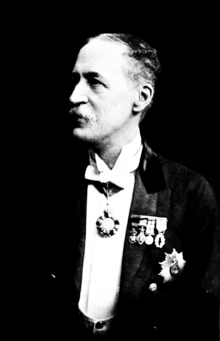
Herbert Hope Risley
Sir Herbert Hope Risley KCIE CSI FRAI (4 January 1851 – 30 September 1911) was a British ethnographer and colonial administrator, a member of the Indian Civil Service who conducted extensive studies on the tribes and castes of the Bengal Presidency. He is notable for the formal identification of the centuries old established caste system of the entire Hindu population of British India in the 1901 census, of which he was in charge. As an exponent of scientific racism, he used anthropometric data to divide Indians into seven races.
Risley was born in Buckinghamshire, England, in 1851 and attended New College, Oxford University prior to joining the Indian Civil Service (ICS). He was initially posted to Bengal, where his professional duties engaged him in statistical and ethnographic research, and he soon developed an interest in anthropology. His decision to indulge these interests curtailed his initial rapid advancement through the ranks of the Service, although he was later appointed Census Commissioner and, shortly before his death in 1911, became Permanent Secretary at the India Office in London. In the intervening years he compiled various studies of Indian communities based on ideas that are now considered to constitute scientific racism. He emphasised the value of fieldwork and anthropometric studies, in contrast to the reliance on old texts and folklore that had historically been the methodology of Indologists and which was still a significant approach in his lifetime. (Full article...) -
Image 10Dil Dhadakne Do (transl. Let the Heart Beat) is a 2015 Indian Hindi-language family comedy drama film directed by Zoya Akhtar and produced by Ritesh Sidhwani and Farhan Akhtar under the Excel Entertainment banner. The film has an ensemble cast of Anil Kapoor, Shefali Shah, Priyanka Chopra, Ranveer Singh, Anushka Sharma and Farhan Akhtar with a voice-over narration by Aamir Khan. The supporting cast includes Rahul Bose, Zarina Wahab, Vikrant Massey, Pawan Chopra, Parmeet Sethi, Dolly Mattdo and Manoj Pahwa. The film tells the story of the Mehras, a dysfunctional family who invite their family and friends on a 10-day cruise trip to celebrate the parents' 30th wedding anniversary and later reconcile.
Zoya conceived the film as a family drama centered on a brother-sister relationship. She wanted to depict a more realistic sibling relationship in contrast to the dubious and over-the-top portrayal for which Bollywood is known. She later wrote the script with her friend and longtime collaborator Reema Kagti, while Farhan penned the dialogues. Much of the principal photography was done on Pullmantur Cruises' ship MS Sovereign while sailing across the Mediterranean and Europe, and on land in France, Spain, Italy, Tunisia, and Turkey. (Full article...) -
Image 11Political map of India depicting its states
The 2008 attacks on Uttar Pradeshi and Bihari migrants in Maharashtra began on 3 February 2008, due to violent clashes between workers of two political parties — the Maharashtra Navnirman Sena (MNS) and the Samajwadi Party (SP) took place at Dadar in Mumbai.
These clashes took place when the workers of the MNS (a splinter faction formed out of the Shiv Sena), tried to attack workers of the SP (the regional party based in Uttar Pradesh), who were proceeding to attend a rally organised by the United National Progressive Alliance (UNPA). (Full article...) -
Image 12Dhoom 2 (transl. Blast 2), also known as Dhoom 2: Back in Action, is a 2006 Indian Hindi-language action thriller film directed by Sanjay Gadhvi with script and dialogues written by Vijay Krishna Acharya from a story by Aditya Chopra, who produced the film under Yash Raj Films. The film, a sequel to Dhoom and the second installment of the Dhoom series, stars Hrithik Roshan, Abhishek Bachchan, Aishwarya Rai, Uday Chopra, and Bipasha Basu.
Dhoom 2 was shot primarily in India, Durban and Rio de Janeiro, becoming the first major Hindi film to be shot in Brazil. Dhoom 2 was released on 24 November 2006 to positive reviews from critics, with praise for its action sequences, soundtrack, cinematography and cast performances (particularly Roshan), but criticism for its script and pacing. The film grossed over ₹1.514 billion and became the highest grossing Hindi film of 2006. It became the highest-grossing Hindi film of all time at the time of its release, before being surpassed by Om Shanti Om (2007), and the second highest-grossing Hindi film in overseas markets behind Kabhi Alvida Naa Kehna (2006), also co-starring Bachchan. (Full article...) -
Image 13Husain on a 1998 stamp of India
Zakir Husain Khan (8 February 1897 – 3 May 1969) was an Indian educationist and politician who served as the 2nd Vice President of India from 1962 to 1967 and 3rd president of India from 13 May 1967 until his death on 3 May 1969.
Born in Hyderabad in an Afridi Pashtun family, Husain completed his schooling in Etawah and went on to study at the Muhammadan Anglo-Oriental College, Aligarh and the University of Berlin from where he obtained a doctoral degree in economics. A close associate of Mahatma Gandhi, Husain was a founding member of the Jamia Millia Islamia which was established as an independent national university in response to the Non-cooperation movement. He served as the university's vice-chancellor from 1926 to 1948. In 1937, Husain chaired the Basic National Education Committee which framed a new educational policy known as Nai Talim which emphasized free and compulsory education in the first language. He was opposed to the policy of separate electorates for Muslims and, in 1946, the Muslim League under Muhammad Ali Jinnah vetoed a proposal by the Indian National Congress to include Husain in the Interim Government of India. (Full article...) -
Image 14Hema Malini: Beyond the Dream Girl is a biography by the journalist and film director Ram Kamal Mukherjee, edited by Nooshin Mowla. Divided into 23 chapters, it chronicles Hema Malini's life and career. The book describes her background and personal life, including her birth in Ammankudi in 1948, her early years in New Delhi, her studies in Madras (now Chennai), and her marriage to the actor Dharmendra—with whom she has two daughters (including the actress Esha Deol)—in 1980. Her 50-year-long acting, dancing, filmmaking, magazine editing, and political career are also detailed. The book was published by HarperCollins on 10 October 2017.
Mukherjee first published Hema Malini: Diva Unveiled, a 2005 coffee table book on Malini that failed commercially and critically. It was followed by another book about the actress in 2007: Hema Malini: The Authorized Biography, by the film critic and journalist Bhawana Somaaya. Over the years, Mukherjee observed Malini's life and realised there are many aspects not chronicled in the previous books. Mukherjee approached her with the idea; she was initially hesitant of the project, entitled Hema Malini: Beyond the Dream Girl, but he promised it would detail all her life's aspects. Following its release, the book received widespread critical acclaim. (Full article...) -
Image 15Varanasi (Hindi pronunciation: [ʋaːˈraːɳəsi], also Benares, Banaras Hindustani pronunciation: [bəˈnaːrəs] or Kashi) is a city on the Ganges river in northern India that has a central place in the traditions of pilgrimage, death, and mourning in the Hindu world. The city has a syncretic tradition of Islamic artisanship that underpins its religious tourism. Located in the middle-Ganges valley in the southeastern part of the state of Uttar Pradesh, Varanasi lies on the left bank of the river. It is 692 kilometres (430 mi) to the southeast of India's capital New Delhi and 320 kilometres (200 mi) to the southeast of the state capital, Lucknow. It lies 121 kilometres (75 mi) downstream of Prayagraj, where the confluence with the Yamuna river is another major Hindu pilgrimage site.
Varanasi is one of the world's oldest continually inhabited cities. Kashi, its ancient name, was associated with a kingdom of the same name of 2,500 years ago. The Lion capital of Ashoka at nearby Sarnath has been interpreted to be a commemoration of the Buddha's first sermon there in the fifth century BCE. In the 8th century, Adi Shankara established the worship of Shiva as an official sect of Varanasi. Tulsidas wrote his Awadhi language epic, the Ramcharitmanas, a Bhakti movement reworking of the Sanskrit Ramayana, in Varanasi. Several other major figures of the Bhakti movement were born in Varanasi, including Kabir and Ravidas. In the 16th century, Rajput nobles in the service of the Mughal emperor Akbar, sponsored work on Hindu temples in the city in an empire-wide architectural style. In 1740, Benares, a zamindari estate, was established in the vicinity of the city in the Mughal Empire's semi-autonomous province of Awadh. Under the Treaty of Faizabad, the East India Company acquired Benares in 1775. The city became a part of the Benares Division of British India's Ceded and Conquered Provinces in 1805, the North-Western Provinces in 1836, United Provinces in 1902, and of the Republic of India's state of Uttar Pradesh in 1950. (Full article...) -
Image 16Sooryavanshi is a 2021 Indian Hindi-language action drama film written and directed by Rohit Shetty in his writing debut and produced by Reliance Entertainment, Rohit Shetty Picturez, Dharma Productions and Cape of Good Films. It is the fourth instalment of the Cop Universe. The film stars Akshay Kumar in the titular role, with Ajay Devgn and Ranveer Singh returning as Singham and Simmba in cameo roles. Katrina Kaif, Jaaved Jaaferi, Vivan Bhatena, Niharica Raizada, Jackie Shroff, Gulshan Grover, Nikitin Dheer, Sikandar Kher, Abhimanyu Singh and Kumud Mishra appear in pivotial supporting roles. Kumar's character was announced towards the end of Simmba that served as a character introduction.
Sooryavanshi was initially locked to release on 24 March 2020, but was postponed due to COVID-19 pandemic in India. After several delays, it finally released theatrically on 5 November 2021 coinciding with Diwali. Marking the penultimate collaboration to date between Shetty and Farhad Samji, the film received mixed reviews from critics and went on to become the highest grossing Hindi film of 2021 with a gross of ₹294 crore after the COVID-19 pandemic. (Full article...) -
Image 17The DRDO Smart Anti-Airfield Weapon (SAAW) is a long-range precision-guided anti-airfield weapon developed by India's Defence Research and Development Organisation (DRDO). It is designed to be capable of engaging ground targets with high precision up to a range of 100 kilometres (62 mi).
The SAAW project was approved by the Government of India in 2013. The first successful test of the weapon was conducted in May 2016. Another successful test was conducted in November of the following year. This was followed by a series of three successful tests in December 2017. (Full article...) -
Image 18
Puri, also known as, Jagannath Puri, (Odia: [ˈpuɾi] ⓘ) is a coastal city and a municipality in the state of Odisha in eastern India. It is the district headquarters of Puri district and is situated on the Bay of Bengal, 60 kilometres (37 mi) south of the state capital of Bhubaneswar. It is home to the 12th-century Jagannath Temple and is one of the original Char Dham pilgrimage sites for Hindus.
Puri has been known by several names since ancient times and was locally known as "Sri Kshetra" and the Jagannath temple is known as "Badadeula". Puri and the Jagannath Temple were invaded 18 times by Muslim rulers, from the 7th century AD until the early 19th century with the objective of looting the treasures of the temple. Odisha, including Puri and its temple, were part of British India from 1803 until India attained independence in August 1947. Even though princely states do not exist in India today, the heirs of the House of Gajapati still perform the ritual duties of the temple. The temple town has many Hindu religious mathas or monasteries. (Full article...) -
Image 19Drushyam (transl. Visual) is a 2014 Indian Telugu-language crime thriller film directed by Sripriya and jointly produced by D. Suresh Babu and Rajkumar Sethupathi. It is a remake of Jeethu Joseph's 2013 Malayalam film Drishyam and features Venkatesh, Meena, Esther Anil and Kruthika Jayakumar. Venkatesh and Kruthika plays the respective roles of Mohanlal and Ansiba Hasan in the original whereas Meena and Esther reprises their roles from the original film. The film tells the story of Rambabu, a middle-class cable TV operator, and his family. They come under suspicion when Varun, the son of the Inspector-general of police (IG), goes missing soon after harassing Rambabu's daughter. The rest of the film reveals how Varun disappeared and what Rambabu does to keep his family from going to prison.
The production work of Drushyam was undertaken by Suresh Balaje and George Pious. Music for the film was composed by Sharreth. The cinematography was done by S. Gopal Reddy and the editing by Marthand K. Venkatesh. Principal photography commenced on 8 March 2014 and lasted three months. It was shot primarily in Kerala, similar to the original, and also filmed at Araku, Simhachalam, Vizianagaram and Hyderabad. The post-production phase ended after one month. (Full article...) -
Image 20
Nyctibatrachus manalari, the Manalar night frog, is a species of frog in the robust frog family Nyctibatrachidae. It was described in 2017, along with six other species in its genus, by the herpetologist Sonali Garg and her colleagues. A small frog, it has an adult male snout–vent length of 13.1–15.4 mm (0.52–0.61 in). It is mainly reddish-brown in color, with a pale patch on the snout, lighter undersides, and dark brown horizontal lines on the limbs. When preserved in ethanol, it is mostly grey to greyish-brown, with grayish-white undersides.
It is endemic to the Western Ghats of India, where it is known from the Periyar Tiger Reserve in Kerala and Meghamalai Wildlife Sanctuary in Tamil Nadu, although its range is likely larger than currently known. It reproduces by laying eggs, with the only known clutch having eight eggs. The species is currently classified as being data deficient by the IUCN due to a lack of information about it; threats to the species include pesticide usage and chytridiomycosis. (Full article...) -
Image 21

Rajiv Gandhi International Airport (IATA: HYD, ICAO: VOHS) is an international airport that serves Hyderabad, the capital of the Indian state of Telangana. It is located in Shamshabad, about 24 kilometres (15 mi) south of Hyderabad and it was opened on 23 March 2008 to replace Begumpet Airport, which was till then the sole civilian airport serving Hyderabad. It is named after Rajiv Gandhi, former Prime Minister of India. Built over an area of 5,500 acres (2,200 ha), it is the largest airport of India by area. It is owned and operated by GMR Hyderabad International Airport Limited (GHIAL), a public–private consortium. It was the first airport in India to launch domestic e-boarding facility in December 2015 and international e-boarding facility in October 2020. It has ranked in AirHelp's list of top 10 airports in the world. The fourth busiest airport in India by passengers traffic, it handled over 25 million passengers and around 150,000 tonnes (170,000 short tons) of cargo between April 2023 and March 2024.
The airport is India's first greenfield airport built under a public-private partnership model. The airport has an integrated passenger terminal, a cargo terminal and two runways. There are also aviation training facilities, a fuel farm, a solar power plant and two maintenance, repair, and operations (MRO) facilities. The airport serves as a hub for Alliance Air (India), Amazon Air, Blue Dart Aviation, SpiceJet and IndiGo. It is a focus city for Air India. (Full article...) -
Image 22What's Your Raashee? (lit. 'What's Your Zodiac Sign?') is a 2009 Indian Hindi-language romantic comedy film written and directed by Ashutosh Gowariker and produced by Ronnie Screwvala and Sunita A. Gowariker. Based on the Gujarati novel Kimball Ravenswood by the playwright and novelist Madhu Rye, the film stars Harman Baweja and Priyanka Chopra, with Darshan Jariwala and Dilip Joshi in supporting roles, and follows the story of Yogesh Patel (Baweja), a Gujarati NRI, who must marry in ten days to save his brother from harm; Yogesh agrees to meet twelve potential brides (all played by Chopra), one from each zodiac sign.
Gowariker had always aspired to make a romantic comedy and was inspired to adapt Rye's novel into a feature film after watching a play based on the same source material. Later, he bought the rights and co-wrote the screenplay with playwright Naushil Mehta. In the process, several plot changes were made for the cinematic adaptation, notably the similarity between the twelve girls, and the ending. Since Gowariker was against using prosthetics to create the twelve characters, Chopra worked on her body language and her voice to make them distinct. Principal photography was extensively done at sixty-seven locations across Mumbai, and partly in Baroda and Chicago. The soundtrack, consisting of thirteen songs, each representing an astrological sign and one compilation, was composed by newcomer Sohail Sen replacing Gowariker's frequent collaborator A. R. Rahman, with lyrics by Javed Akhtar.[citation needed] (Full article...) -
Image 23"The Inner Light" is a song by the English rock band the Beatles, written by George Harrison. It was released on a non-album single in March 1968, as the B-side to "Lady Madonna". The song was the first Harrison composition to be issued on a Beatles single and reflects the band's embrace of Transcendental Meditation, which they were studying in India under Maharishi Mahesh Yogi at the time of the single's release. After "Love You To" and "Within You Without You", it was the last of Harrison's three songs from the Beatles era that demonstrate an overt Indian classical influence and are styled as Indian pieces. The lyrics are a rendering of chapter 47 from the Taoist Tao Te Ching, which he set to music on the recommendation of Juan Mascaró, a Sanskrit scholar who had translated the passage in his 1958 book Lamps of Fire.
Harrison recorded the instrumental track for "The Inner Light" in Bombay in January 1968, during the sessions for his Wonderwall Music soundtrack album. It is the only Beatles studio recording to be made outside Europe and introduced Indian instruments such as sarod, shehnai and pakhavaj to the band's sound. The musicians on the track include Aashish Khan, Hanuman Jadev and Hariprasad Chaurasia. Aside from Harrison's lead vocal, recorded in London, the Beatles' only contribution came in the form of group backing vocals over the song's final line. In the decade following its release, the song became a comparative rarity among the band's recordings; it has subsequently appeared on compilation albums such as Rarities; Past Masters, Volume Two; and Mono Masters. It is the only Beatles song to never appear on any official Beatles album. (Full article...) -
Image 24
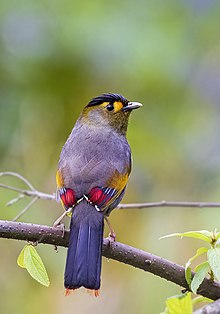
The Bugun liocichla (Liocichla bugunorum) is a passerine bird species from the family Leiothrichidae closely related to the Emei Shan liocichla. First spotted in 1995 in Arunachal Pradesh, India, it was described as a new species in 2006. The description was made without the collection of a type specimen as they were too few to risk killing one. It is thought to be an endangered species, with a small population, and a very restricted distribution range within which commercial development threatens the habitat. (Full article...) -
Image 25

'Panoramic View of Mumbai taken from Malabar Hill' (1862), a watercolour on 5 folding pages, by Mary Ann Scott-Moncrieff
Indigenous tribals have inhabited Mumbai (Bombay) since the Stone Age. The Kolis and Aagri (a Marathi-Konkani people) were the earliest known settlers of the islands. Between the 2nd century BCE and 10th century CE, the islands came under the control of successive indigenous dynasties: the Satavahanas, Abhiras, Vakatakas, Kalachuris, Konkan Mauryas, Chalukyas, Rashtrakutas, Silharas & Cholas.
Bhima of Mahikavati established a small kingdom in the area during the late 13th century, and brought settlers. The Delhi Sultanate captured the islands in 1348, and they were later passed to the Sultanate of Guzerat from 1391. The Treaty of Bassein (1534) between the Portuguese viceroy Nuno da Cunha and Bahadur Shah of Gujarat, placed the islands into Portuguese possession in 1534. (Full article...)
News
- 11 January 2025 – 2024–25 South-West Indian Ocean cyclone season
- France places the Indian Ocean island of Mayotte on red alert due to approaching Tropical Cyclone Dikeledi, roughly one month after the French overseas department was devastated by Cyclone Chido. (Reuters)
- 8 January 2025 – Deadly human stampedes in Hindu temples
- Six people are killed and over forty others are injured in a stampede at the Hindu Venkateswara Temple in Tirupati, Andhra Pradesh, India. (AP) (Business Today)
- 7 January 2025 – HMPV outbreak in East Asia
- India confirms their first cases of the human metapneumovirus disease. (CBS News)
- 6 January 2025 – Naxalite–Maoist insurgency
- A bomb blast attributed to Maoist rebels in Bijapur, Chhattisgarh, India, kills eight police officers and a driver traveling in a police vehicle. (Reuters)
- 6 January 2025 –
- Several miners are trapped in a coal mine in Dima Hasao, Assam, India, with rescue efforts underway involving the State Disaster Response Force, the National Disaster Response Force, and the Indian Army. Local authorities state that flooding may have caused the incident. (Reuters)
Did you know...
- ... that after becoming a religious leader of the Upper Skagit Indian Tribe, Slaybebtikud united the tribes and established himself as their sole leader?
- ... that before a separate party was created for Pakistan, the All India Scheduled Castes Federation simultaneously held the posts of Minister of Law in both Pakistan and India?
- ... that the horse Sardar was gifted to Jacqueline Kennedy during her 1962 goodwill tour of Pakistan?
- ... that 24-year-old Mahasweta Chakraborty of Operation Ganga helped around 800 students return to India during the Russian invasion of Ukraine?
- ... that Asha Sobhana is the first Indian player to take a five-wicket haul in the Women's Premier League?
- ... that there is a dispute within the Indian communist movement on whether the Communist Party of India was founded in Tashkent in 1920 or Kanpur in 1925?
Topics related to India
Timeline of Indian history, Indus Valley Civilisation, Dholavira, Science and technology in ancient India, Meluhha, Aryan invasion theory, Out of India theory, Greek conquests in India, Indian maritime history, Maurya Empire, Ashoka, Shunga Empire, Hoysala Empire, Vijayanagara, Satavahana dynasty, Indo-Greek Kingdom, Indo-Scythians, Indo-Parthian Kingdom, Kushan Empire, Western Satraps, Gupta Empire, Chola dynasty, Pala Empire, Islamic incursions in India, Mughal Empire, Maratha Empire, British Raj, East India Company, Governor-General, Viceroy, War of Independence, 1857, Indian independence movement, Indian National Army, Azad Hind, Quit India Movement, Partition of India, History of Republic of India, Non-Aligned Movement, Sino-Indian War, Indo-Pakistani War of 1947–1948, Indo-Pakistani War of 1965, Indo-Pakistani War of 1971, Kargil War, 2001–02 India–Pakistan standoff, Military, Demographic
Law, Hindu law, Constitution, Political parties (Indian National Congress, Bharatiya Janata Party), Foreign relations, Elections, Political divisions, Reservation in India
Government agencies, Legislative branch (Lok Sabha, Rajya Sabha) Executive branch (President & Vice President, Prime Minister & Deputy Prime Minister, Cabinet Ministers, Cabinet Secretary, Election Commission, Foreign Minister; Law enforcement: CBI, CID, Intelligence: IB, RAW), Directorate General of Income Tax Investigation Judicial branch (Supreme Court), Armed Forces (Army, Navy, Air Force, Border Security Force, Coast Guard)
Himalayas, Western Ghats, Eastern Ghats, Indo-Gangetic Plain, Deccan Plateau, Thar Desert, Ganges, Rann of Kutch, Brahmaputra River, Northeast India; Mountains, Valleys, Islands, Rivers; States and union territories, Cities, Districts, Regions, Fauna, Flora
Rupee, Bombay Stock Exchange, National Stock Exchange, Standard of living, Companies, Reserve Bank of India, Energy policy (Solar, Wind, Nuclear), Tourism, Transport (Expressways, Rail transport, Auto rickshaw),
Languages, Standard of living, Religion
Music (Carnatic, Hindustani, Indi-pop), Dance, Languages, Literature, Architecture, Film & TV, Cuisine, Holidays, Folklore, Education, Media, Indian martial arts
Indian Council of Agricultural Research (ICAR), Indian Institute of Astrophysics, National Centre for Software Technology, AIIMS, IISc, IIT, NIT, BITS-Pilani, INRegistry, Indian numbering system, Indian Space Research Organisation, National Internet Exchange of India, ICRISAT, International Institute of Information Technology, Hyderabad
Indian English, Indian nationality law, Numbering system, Indian Space Research Organisation, Telecommunications, National Highways Development Project, Flag, Vehicle registration plates, Indian nationalism, Metrication in India
Categories
Related portals
Religions in India
Indian Subcontinent
Other countries
Wikipedias in Indian languages
- অসমীয়া (Assamese)
- বাংলা (Bengali)
- भोजपुरी (Bhojpuri)
- বিষ্ণুপ্রিয়া মণিপুরী (Bishnupriya Manipuri)
- गोंयची कोंकणी / Gõychi Konknni (Konkani)
- ગુજરાતી (Gujarati)
- हिन्दी (Hindi)
- ಕನ್ನಡ (Kannada)
- कॉशुर/كشميري (Kashmiri)
- मैथिली (Maithili)
- മലയാളം (Malayalam)
- मराठी (Marathi)
- नेपाली (Nepali)
- नेपाल भाषा
- (Newari)
- ଓଡ଼ିଆ (Odiya)
- ਪੰਜਾਬੀ (Punjabi)
- पालि (Pali)
- संस्कृत (Sanskrit)
- ᱥᱟᱱᱛᱟᱲᱤ (Santali)
- سنڌي (Sindhi)
- தமிழ் (Tamil)
- తెలుగు (Telugu)
- ತುಳು (Tulu)
- اردو (Urdu)
Associated Wikimedia
The following Wikimedia Foundation sister projects provide more on this subject:
-
Commons
Free media repository -
Wikibooks
Free textbooks and manuals -
Wikidata
Free knowledge base -
Wikinews
Free-content news -
Wikiquote
Collection of quotations -
Wikisource
Free-content library -
Wikiversity
Free learning tools -
Wikivoyage
Free travel guide -
Wiktionary
Dictionary and thesaurus
- Pages using the Phonos extension
- Pages with Hindustani IPA
- Pages including recorded pronunciations
- Pages with Tamil IPA
- Pages with Bengali IPA
- Pages with Hindi IPA
- Pages with non-numeric formatnum arguments
- Pages with Odia IPA
- Portals with triaged subpages from June 2018
- All portals with triaged subpages
- Portals with no named maintainer
- Automated article-slideshow portals with 51–100 articles in article list
- Automated article-slideshow portals with 101–200 articles in article list
- Automated article-slideshow portals with 501–1000 articles in article list
- Wikipedia move-protected portals
- Redirect targets of redirected portals with existing subpages



